A room’s upper fifth can either whisper quietly or shout from the rafters, and 2025’s design conversation makes it clear that bold ceilings are taking the mic. Designers are moving beyond traditional white by treating the “fifth wall” as a canvas for mood, light play, and hidden function. From shimmering lacquers that bounce daylight to sculptural plaster that doubles as art, an accent ceiling now sets the tone for the entire space. Whether you crave subtle warmth or head-turning drama, the ideas below will help you look up — and never see your ceiling the same way again. Let’s explore what’s possible.
1. High-Gloss Painted Accent Ceiling for Instant Drama
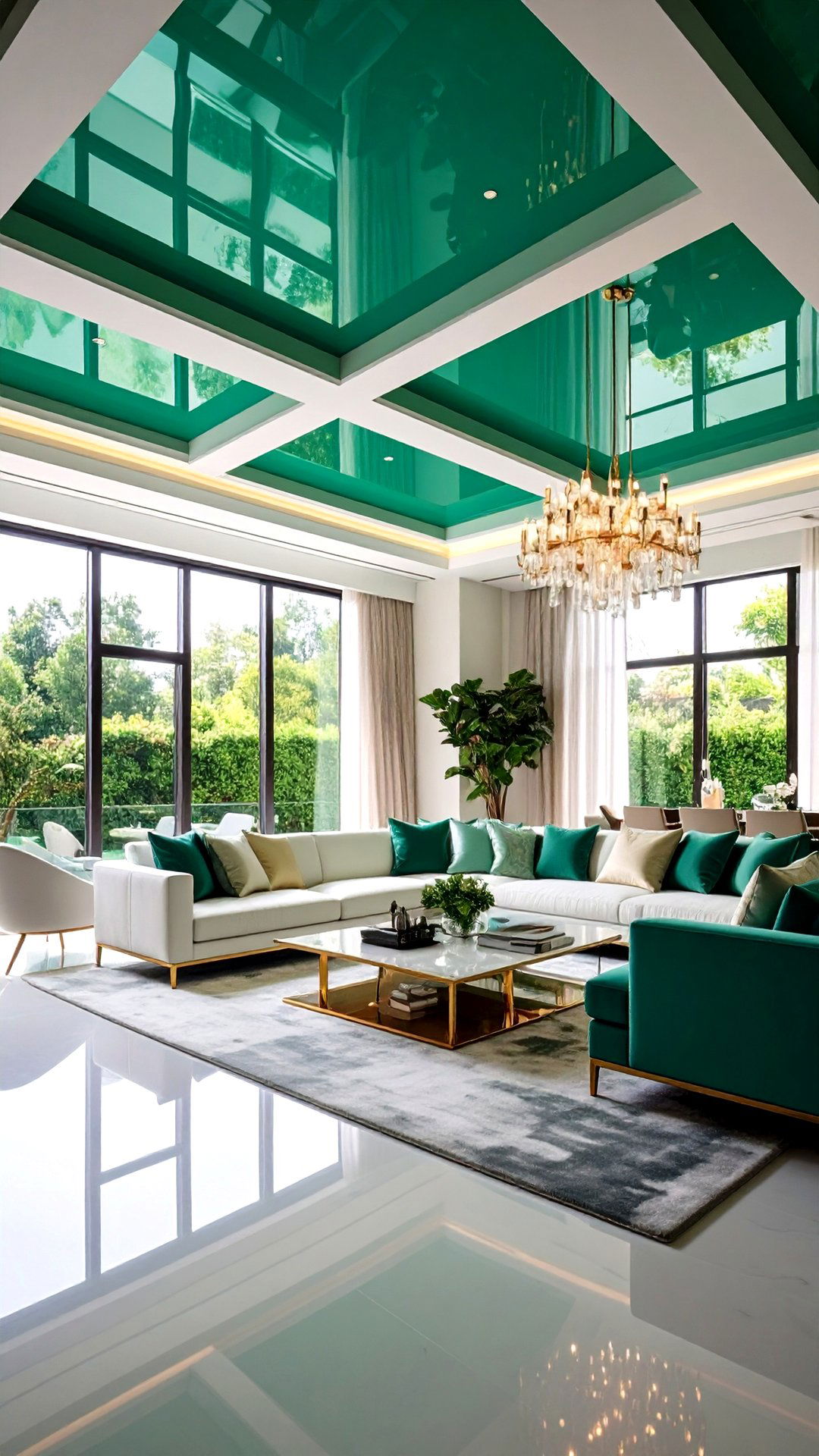
Unlike a simple coat of matte paint, a high-gloss accent ceiling behaves like a liquid mirror that amplifies light and color. The shiny surface visually lifts low rooms by reflecting lamps, windows, and even candlelight, creating the illusion of added height without construction. Choose a saturated jewel tone — think emerald or midnight blue — for richness, or stay neutral with charcoal for modern polish. Because glossier finishes highlight imperfections, prep work is key: sand, prime, and use a high-quality enamel formulated for ceilings. The result is a glamorous, wipe-clean surface that turns every glance upward into an event.
2. Wallpapered Accent Ceiling That Steals the Spotlight
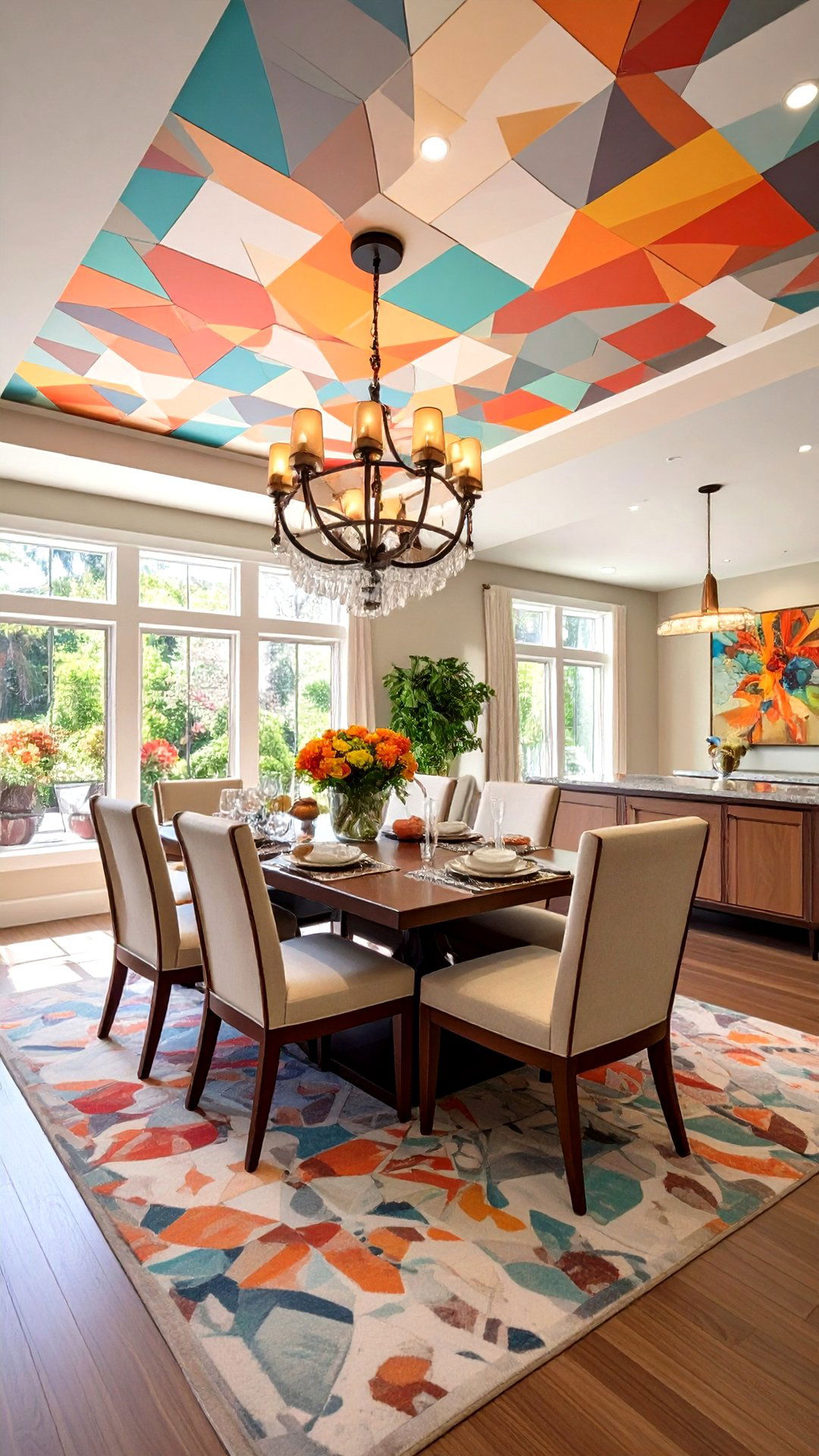
A, the quickest way to introduce pattern overhead is with peel-and-stick wallpaper designed for ceilings. Florals bring garden vibes to nurseries; bold geometrics make a dining room feel like a boutique hotel. Modern adhesives allow repositioning, so renters can experiment without fear. Balance busy prints by keeping walls calm or matching one hue in the wallpaper to furnishings down below. Before installing, wash and lightly sand to help the paper grip, then use a wide smoothing blade to erase bubbles. In a single afternoon, your accent ceiling transforms from blank plane to conversation starter.
3. Coffered Accent Ceiling Adds Architectural Depth
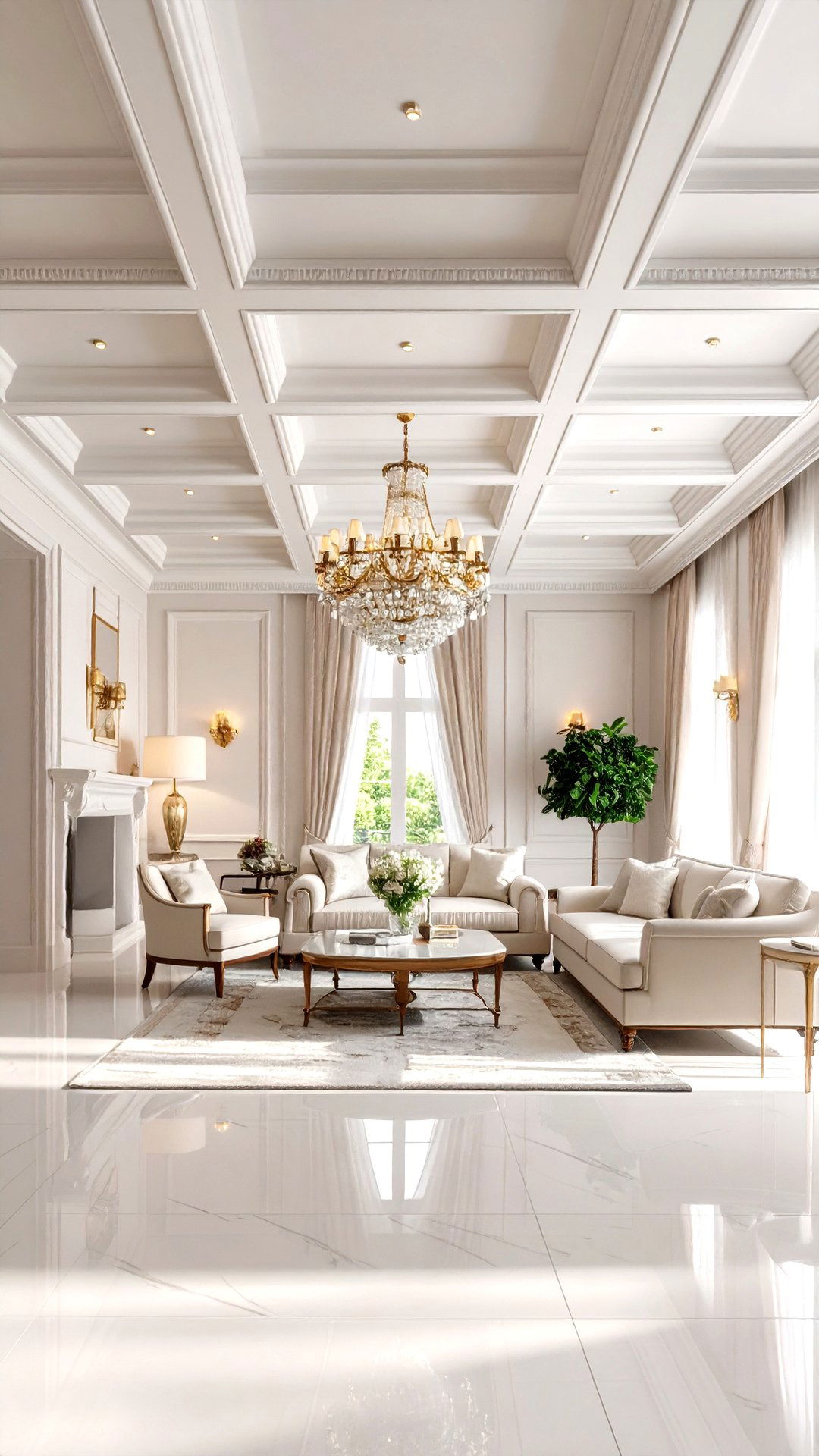
For homeowners craving classic refinement, a coffered accent ceiling introduces depth through a grid of beams and recessed panels. Painted the same color as walls, the pattern reads subtle; stained wood beams against a pale background feel timelessly upscale. Today’s lightweight polyurethane kits make installation friendlier for DIYers than heavy timber, and hollow beams can hide wiring for recessed lights or speakers. Pair with crown molding to tie the geometry together, increasing perceived ceiling height while disguising uneven plaster. Each coffer frames its own shadow, delivering texture that never overwhelms.
4. Dark-Moody Accent Ceiling for Cozy Contrast
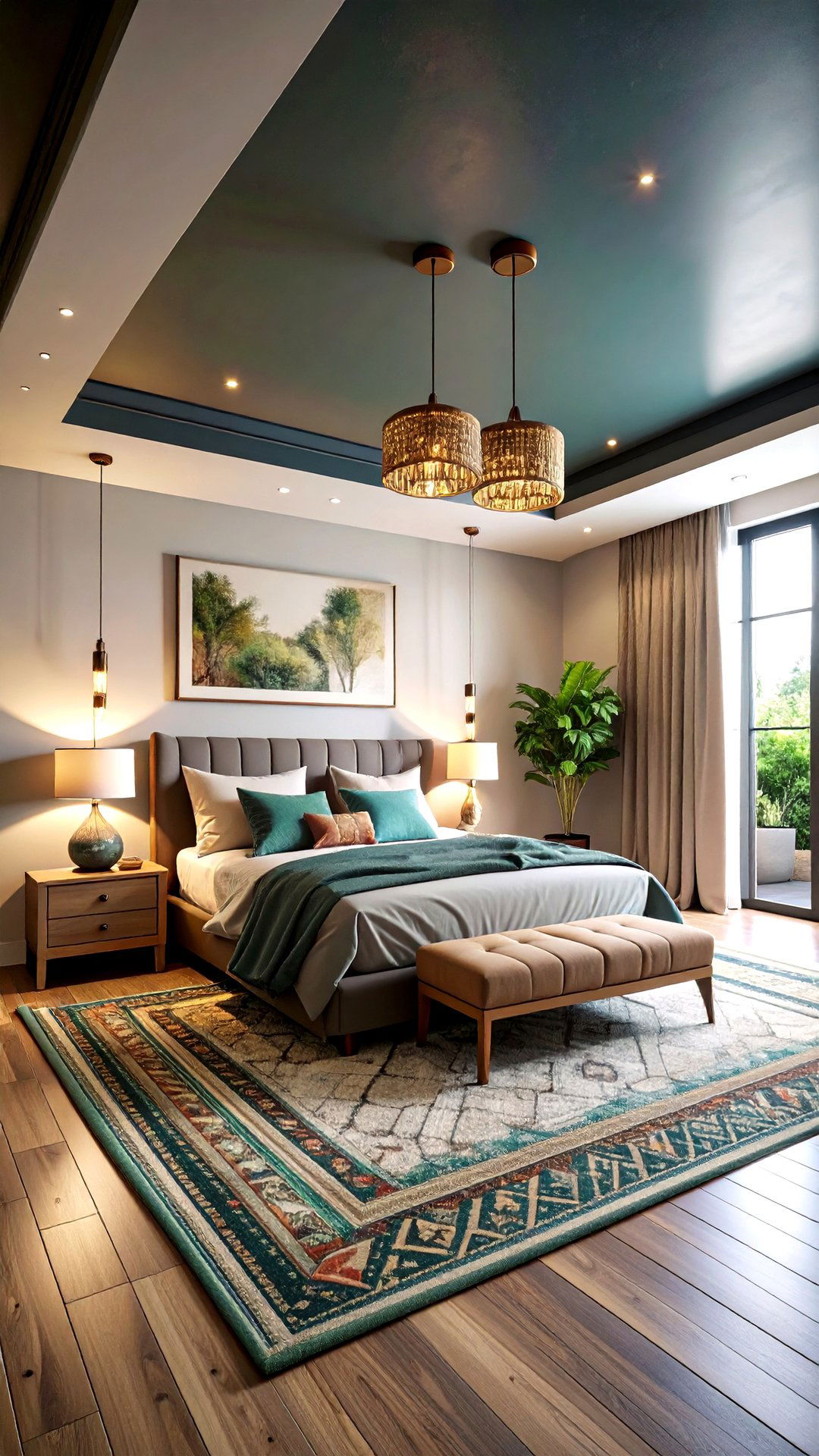
Consider painting your accent ceiling a deep charcoal, aubergine, or forest green to envelope a space in warmth. Despite old rules that dark colors shrink rooms, designers now use them overhead to create a cocoon effect — especially effective in bedrooms, libraries, and media rooms. When walls stay lighter, the contrast defines edges and makes vertical surfaces feel taller. Matte or eggshell sheens soften glare, turning the color into a velvety backdrop for pendant lights or glow strips. Finish by anchoring the palette with textiles — pillows, rugs, art — that echo the ceiling’s shade.
5. Shiplap Accent Ceiling for Farmhouse Texture
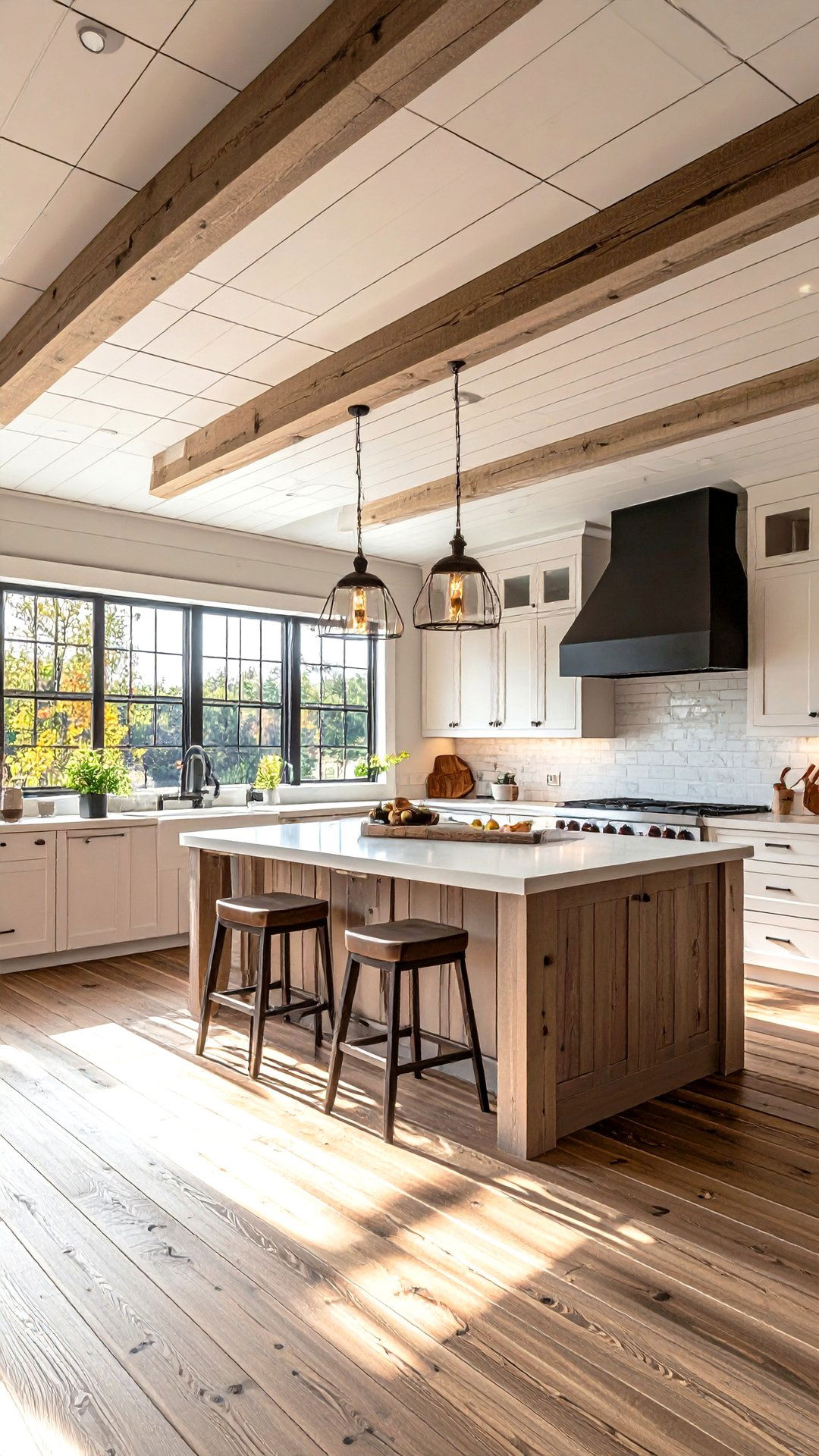
To introduce rustic charm, install tongue-and-groove shiplap boards across the ceiling, leaving hairline gaps that cast subtle shadows. Painting the planks crisp white keeps things beachy; staining them honey or driftwood gray leans farmhouse chic. Because lumber hides minor waviness in old plaster, shiplap is also a smart cover-up. Run boards perpendicular to joists for proper nailing, and vary lengths randomly to avoid repeating seams. The linear pattern visually elongates a room, while natural wood grain adds warmth impossible to replicate with paint alone.
6. Metallic Tin-Tile Accent Ceiling for Vintage Glam
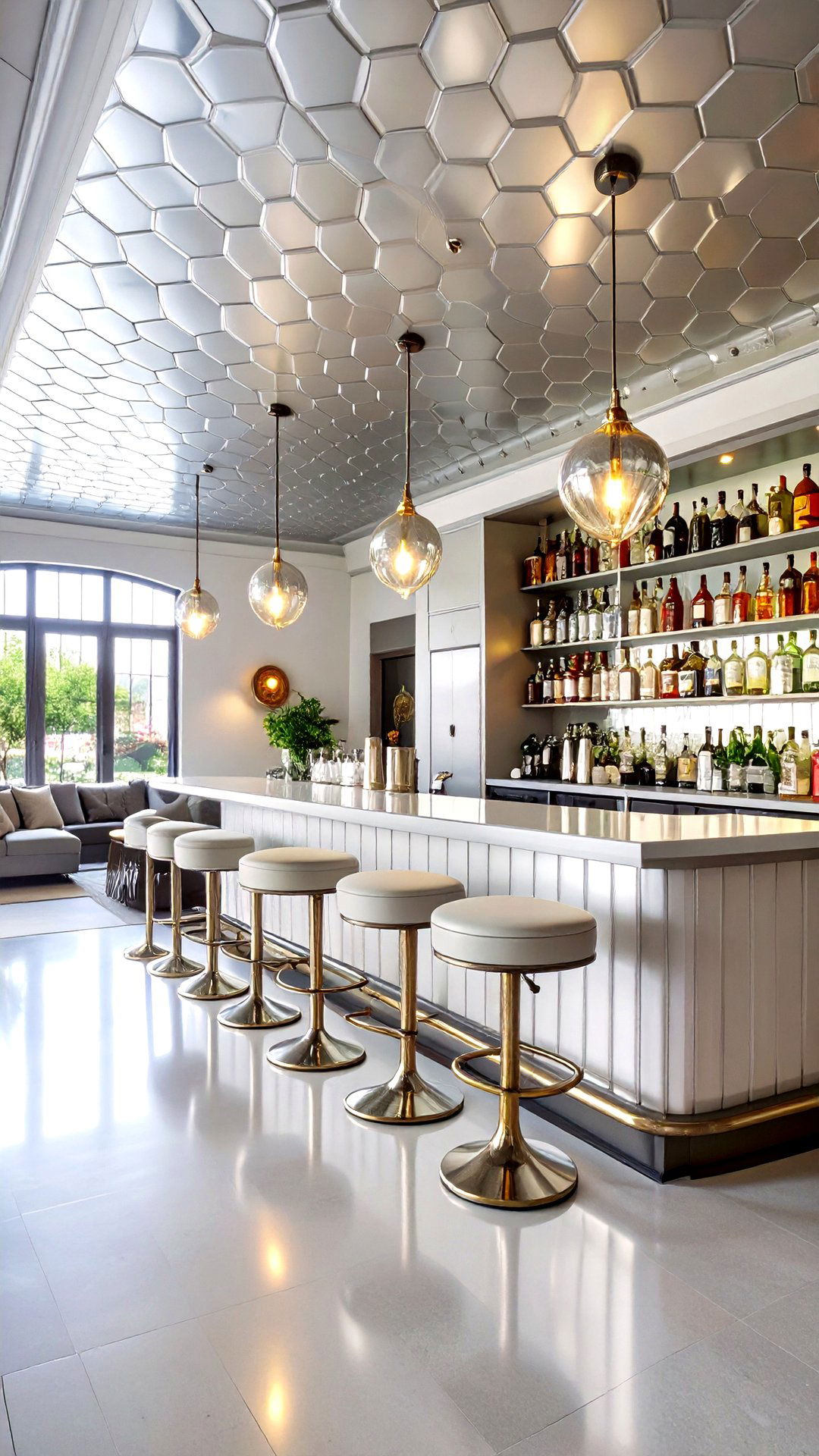
Surprisingly lightweight aluminum or PVC versions of pressed-tin tiles recreate the opulence of turn-of-the-century saloons with modern ease. Antique-style patterns — egg-and-dart, fleurs-de-lis — catch light beautifully when finished in silver, copper, or aged bronze. Mount tiles directly to furring strips or glue them onto smooth drywall; overlap edges to hide fasteners. Pairing this accent ceiling with Edison-bulb pendants enhances sparkle, making kitchens and bars feel both nostalgic and fresh. For extra wow, frame the edges with crown molding painted to match the metal tone.
7. Sculptural Plaster Accent Ceiling as Art Piece
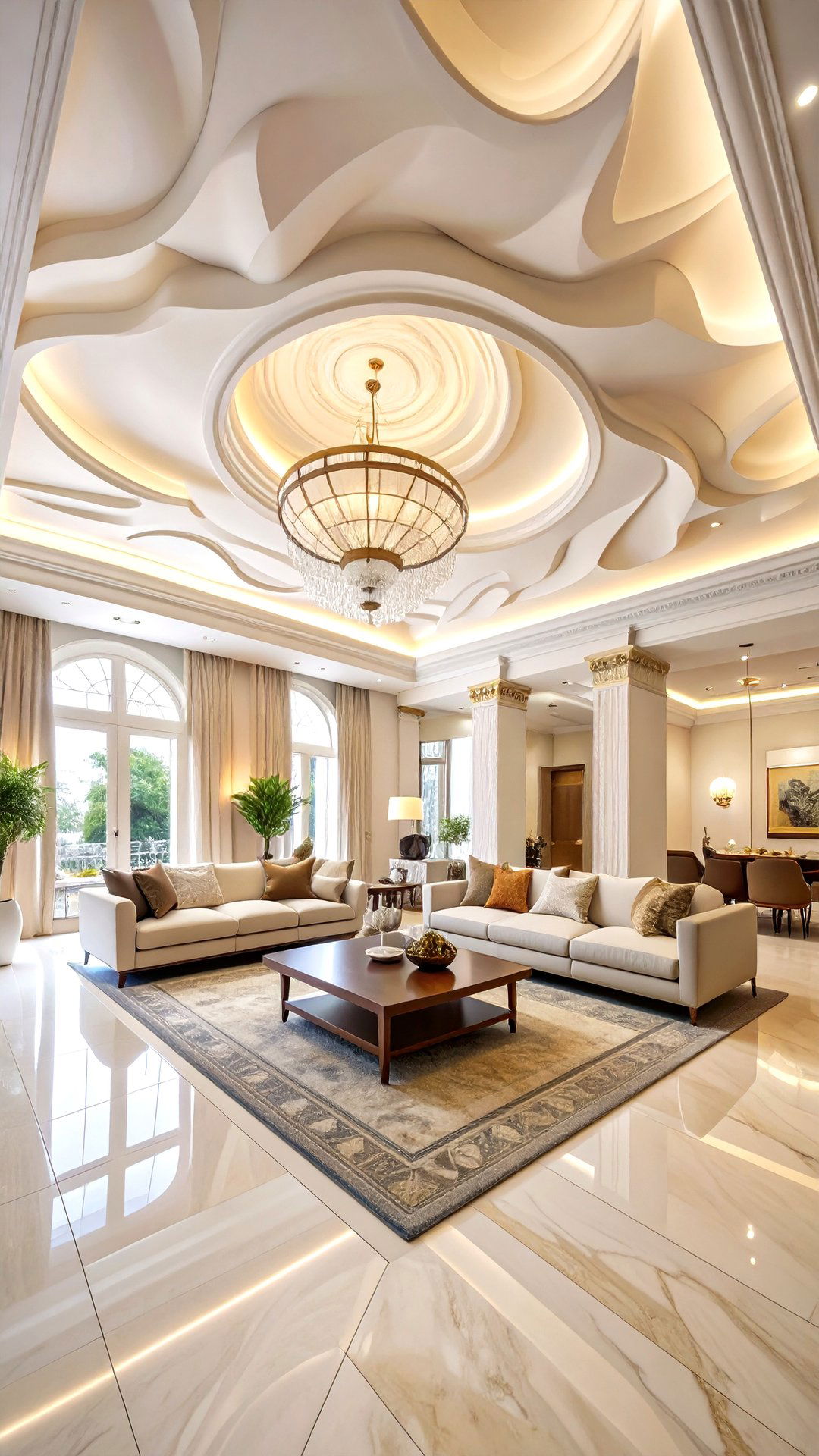
For an artistic statement, artisans can hand-trowel plaster into swooping waves, geometric ridges, or floral reliefs that read like permanent sculpture. Because the medium absorbs light differently across its curves, the accent ceiling changes character throughout the day. Opt for a single color — often warm white — to let shadows provide definition, or add subtle mineral pigments for depth. Maintenance is easy: dust with a microfiber mop and occasionally touch up high points. Though bespoke, this approach turns a ceiling into a one-of-a-kind masterpiece rather than mere surface.
8. Exposed Beam Accent Ceiling Embraces Natural Strength
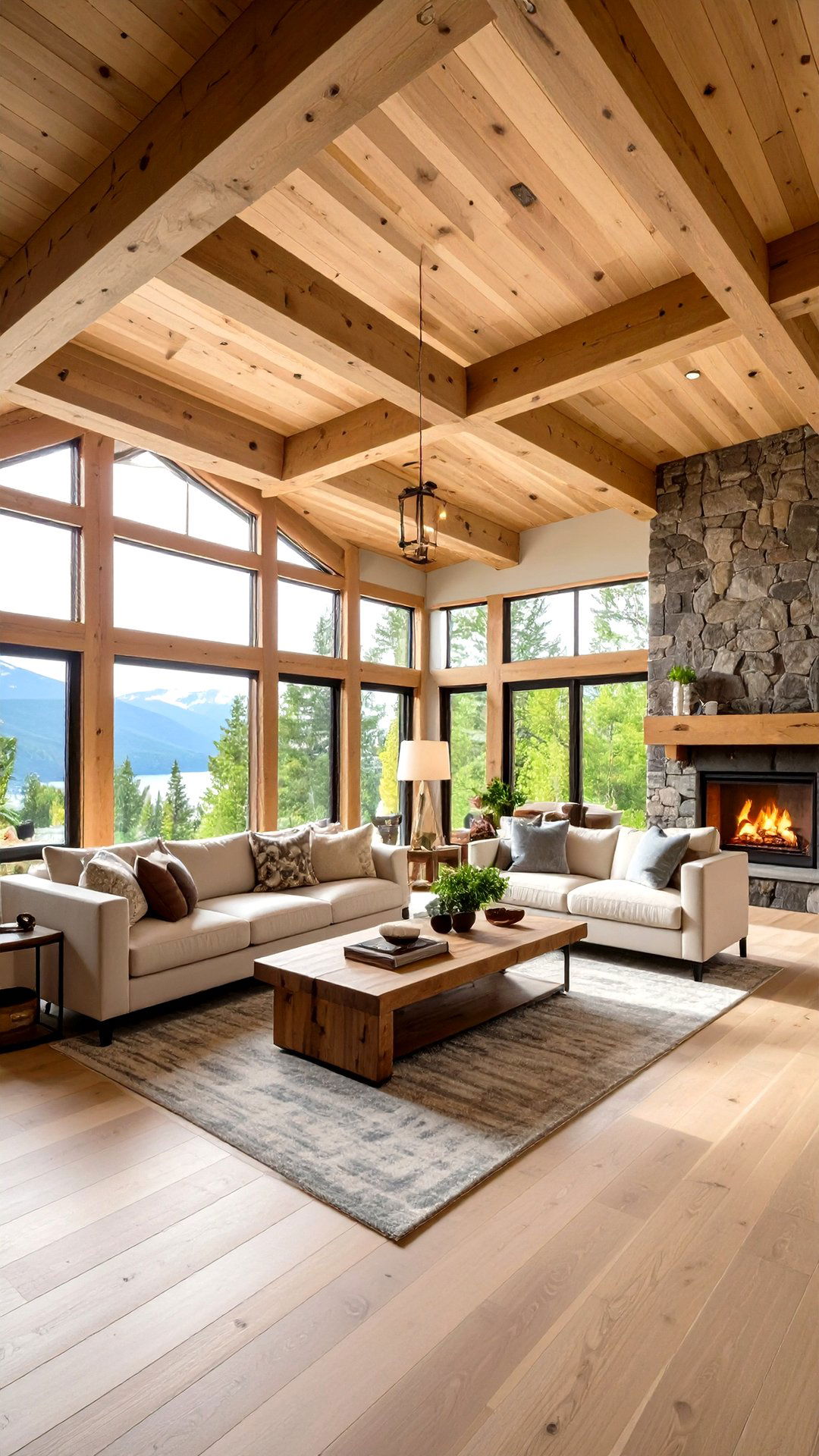
Bringing, reclaimed or faux structural beams into view introduces timeless heft and organic warmth. Leave beams raw for lodge vibes or stain them espresso against pale planks for contemporary contrast. Hollow faux beams weigh far less than solid timber and can channel wiring for dramatic uplighting. Strategically placed, they draw eyes lengthwise, visually stretching a room. Because beams lower perceived height, balance them with tall windows or light wall colors. The resulting accent ceiling celebrates craftsmanship while still feeling fresh.
9. Ombré-Painted Accent Ceiling Transitions Color Seamlessly
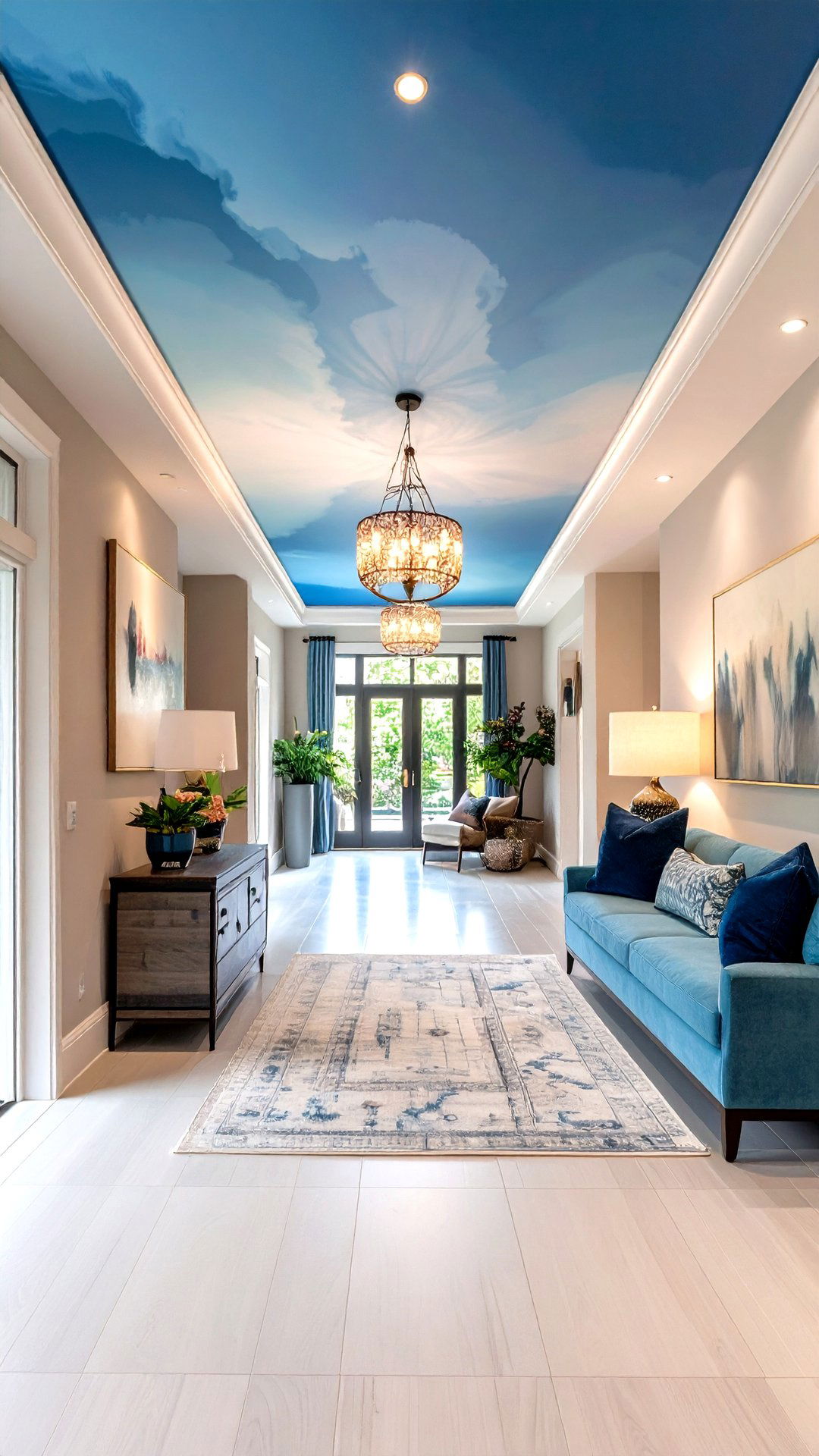
To infuse subtle artistry overhead, blend two or three paint shades from light at one end to dark at the other, creating a gentle sky-like gradient. Start by mapping equal sections, then feather colors together using a dry brush or roller for a cloud-soft finish. An ombré accent ceiling elongates narrow halls or lofts, guiding the eye along the fade. Stick to related hues — powder blue fading into indigo, for instance — for cohesion, and repeat the darkest tone in throw pillows or art below to tie the palette together.
10. Acoustic Felt-Panel Accent Ceiling That Quiets Echo
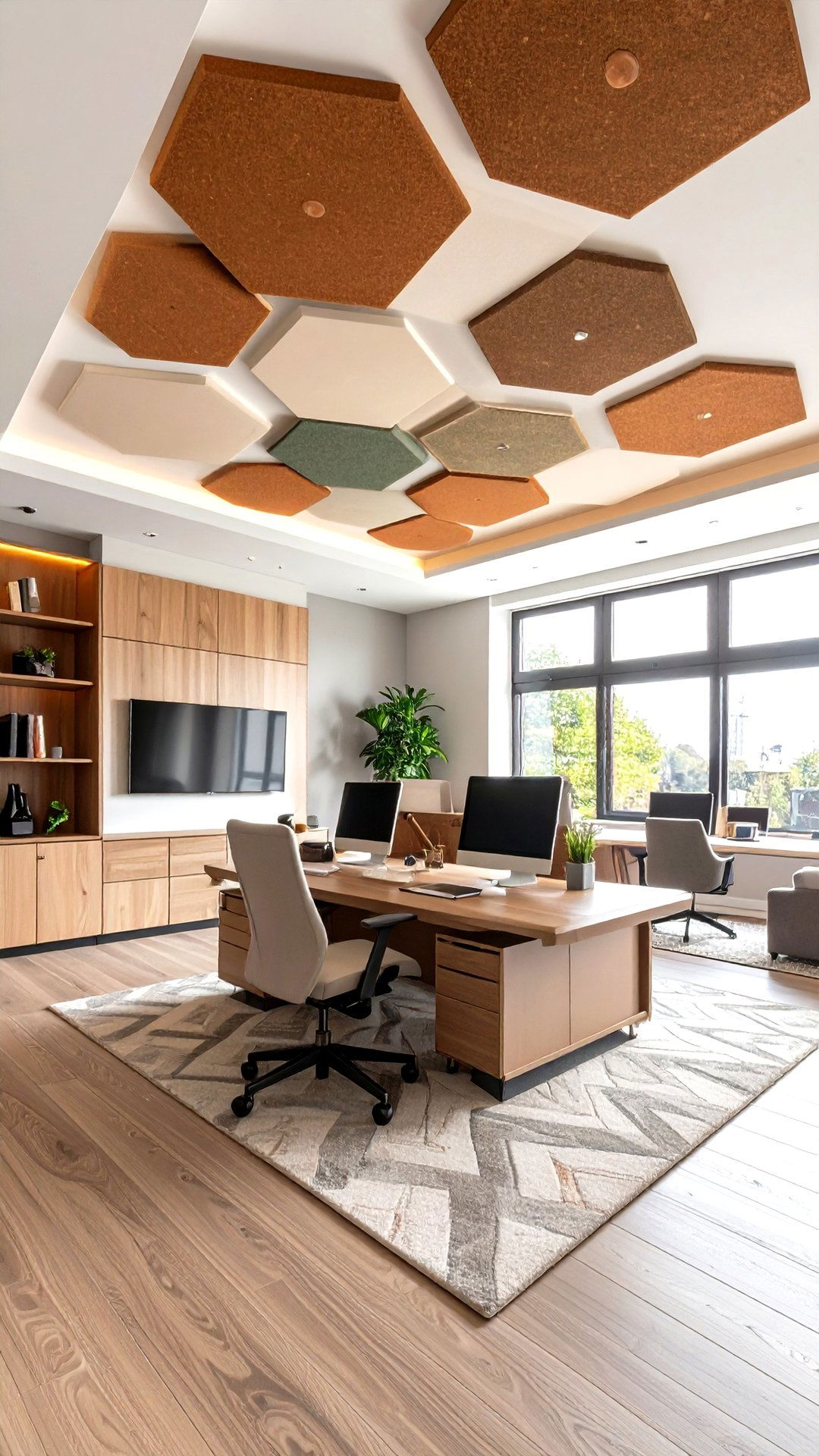
Surprisingly, accent ceilings can improve acoustics as well as aesthetics. Install felt or PET acoustic panels in hexagons, planks, or custom shapes; choose on-trend colors like terracotta or sage. These lightweight tiles absorb sound waves, reducing echo in home offices, media rooms, or open-concept living areas. Many panels accept peel-and-stick mounting, simplifying DIY upgrade. Arrange them in patterns — chevrons, herringbone — for visual interest or leave gaps between panels for a floating effect. The result is a ceiling that both looks and sounds better.
11. Mirrored Accent Ceiling Expands Visual Space
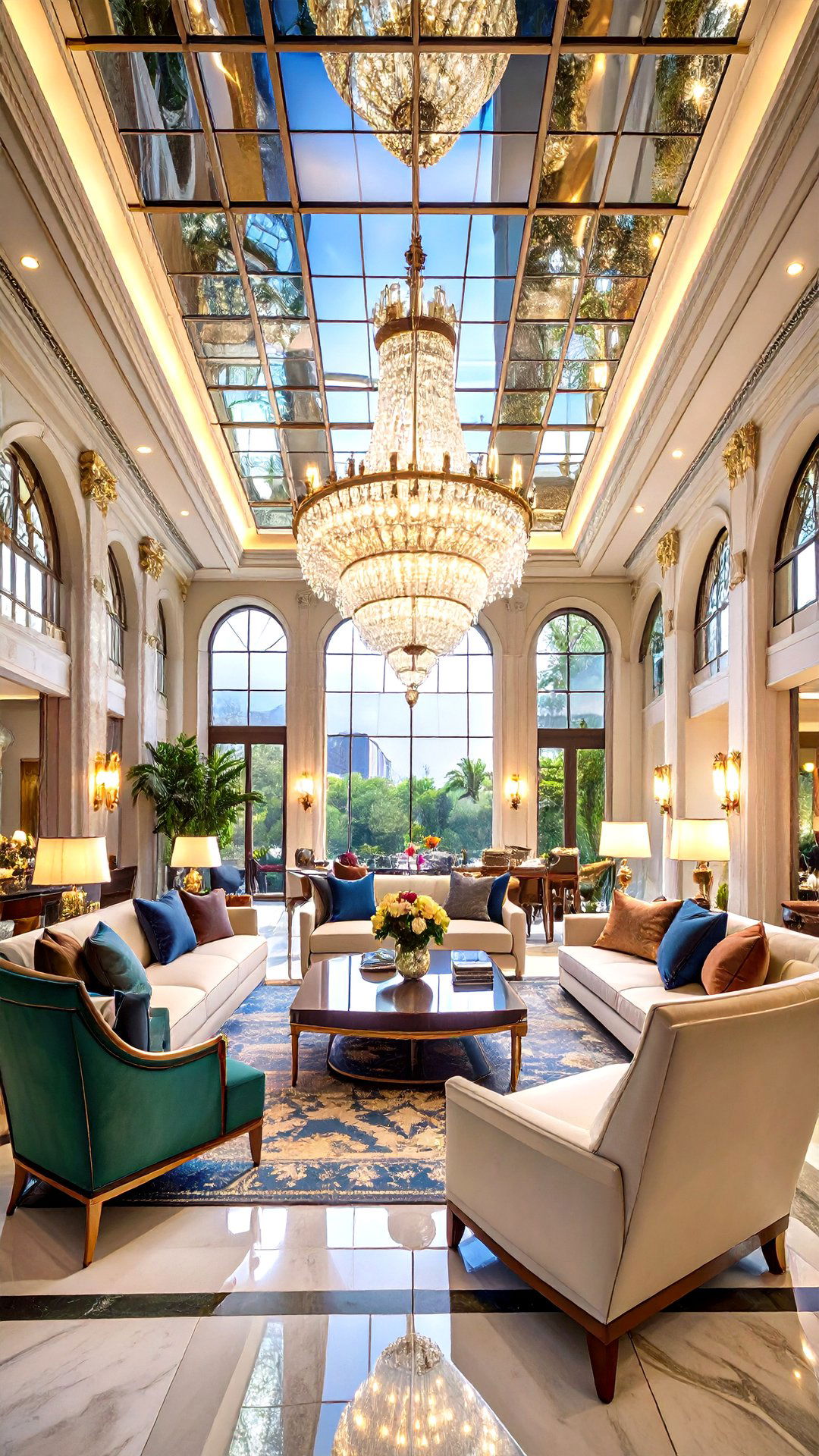
What could feel more glamorous than movie-set mirrors overhead? Thin safety-backed acrylic or tempered-glass panels adhered in grids bounce light in every direction, making low or narrow rooms appear instantly larger. Mirrors pair especially well with crystal chandeliers, doubling sparkle. To avoid fun-house distortion, use high-quality glass and hire professionals for precise alignment. Keep walls minimal so the accent ceiling remains star of the show. Remember to dust regularly — microfiber wands and gentle glass cleaner preserve flawless reflections.
12. Wood-Slat Accent Ceiling for Modern Warmth
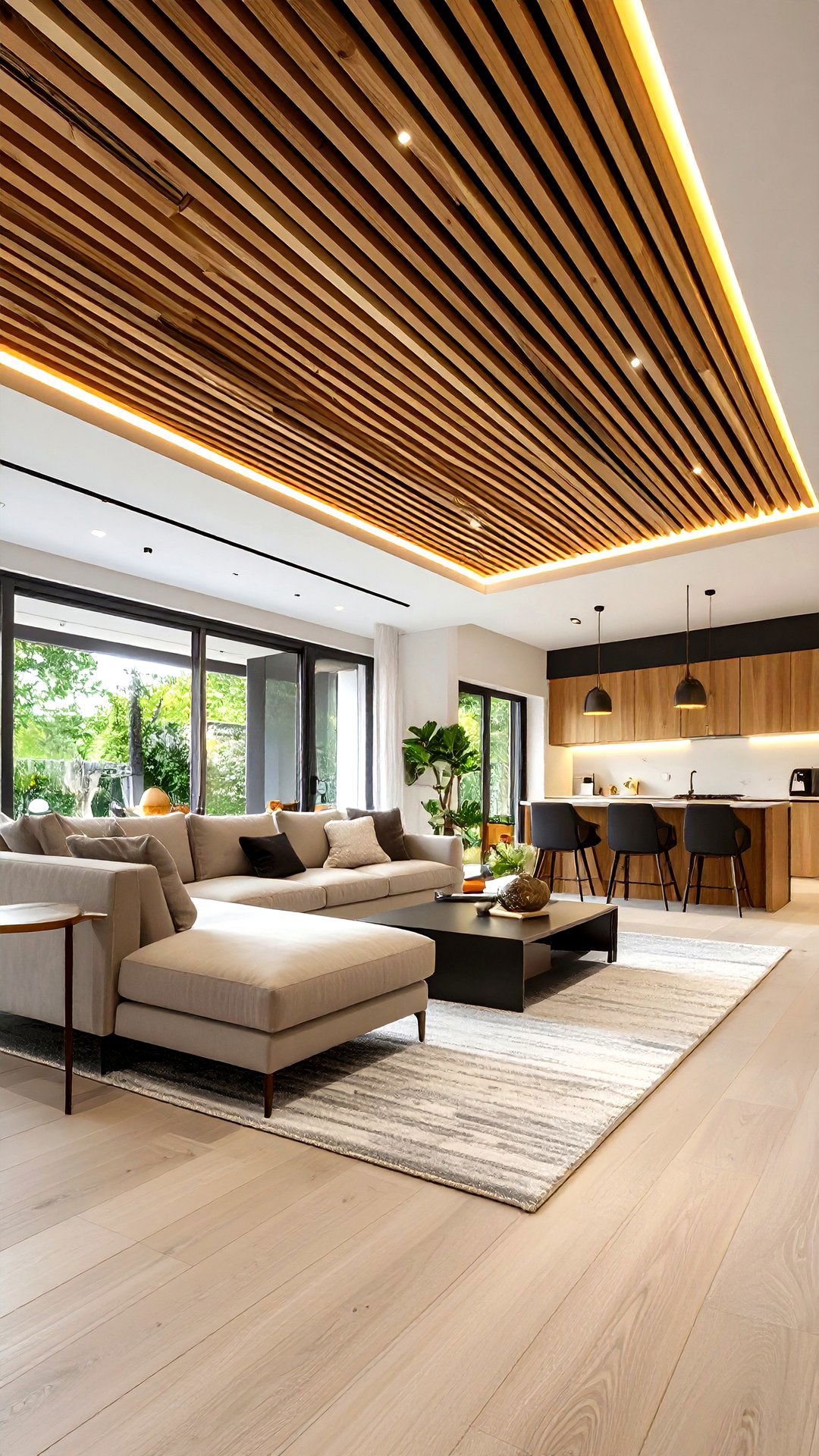
By installing evenly spaced wooden slats — think cedar, oak, or poplar — over dark acoustic backing, you create vertical lines that add rhythm and conceal mechanicals. Paint the substrate matte black to push it visually away, allowing warm slats to pop. Indirect LED strips tucked between slats produce a striking wash of light at night. This modern accent ceiling originated in Scandinavian design but suits any contemporary space craving texture without heaviness. Maintain tonal consistency by repeating the wood species in furniture legs or shelving.
13. LED-Backlit Tray Accent Ceiling Highlights Architecture
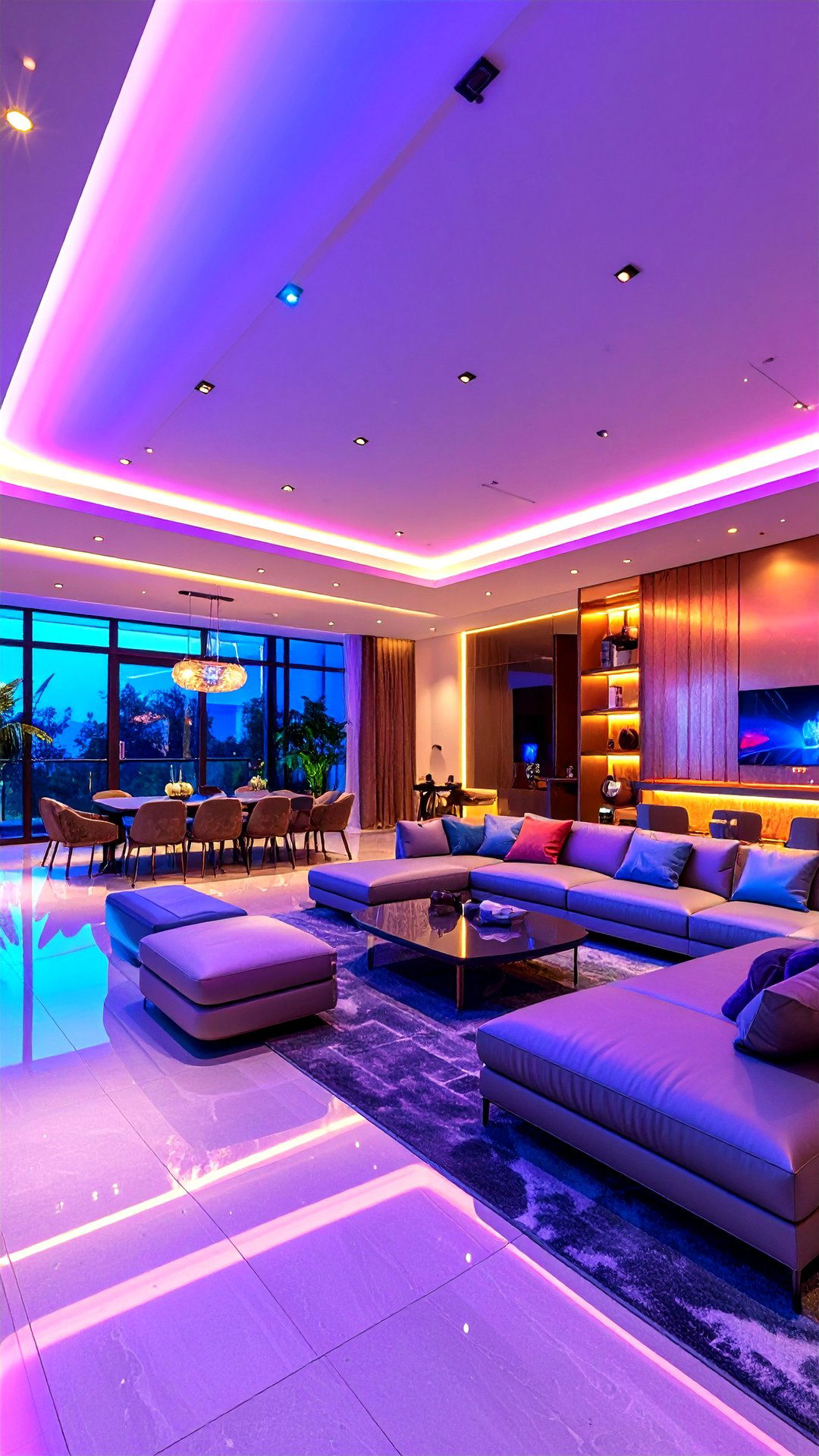
For futuristic flair, build a shallow tray — essentially a dropped border around the room — and hide dimmable LED tape along the recess. When lights are on, the accent ceiling appears to float, washing soft illumination across its center. Paint the tray’s inner vertical surfaces a contrasting hue or metallic for extra depth. Because LEDs sip power and last years, they’re perfect for nightly mood lighting. Pair with smart controls to shift from warm dinner ambiance to cool morning brightness at a tap.
14. Hand-Painted Mural Accent Ceiling Tells a Story
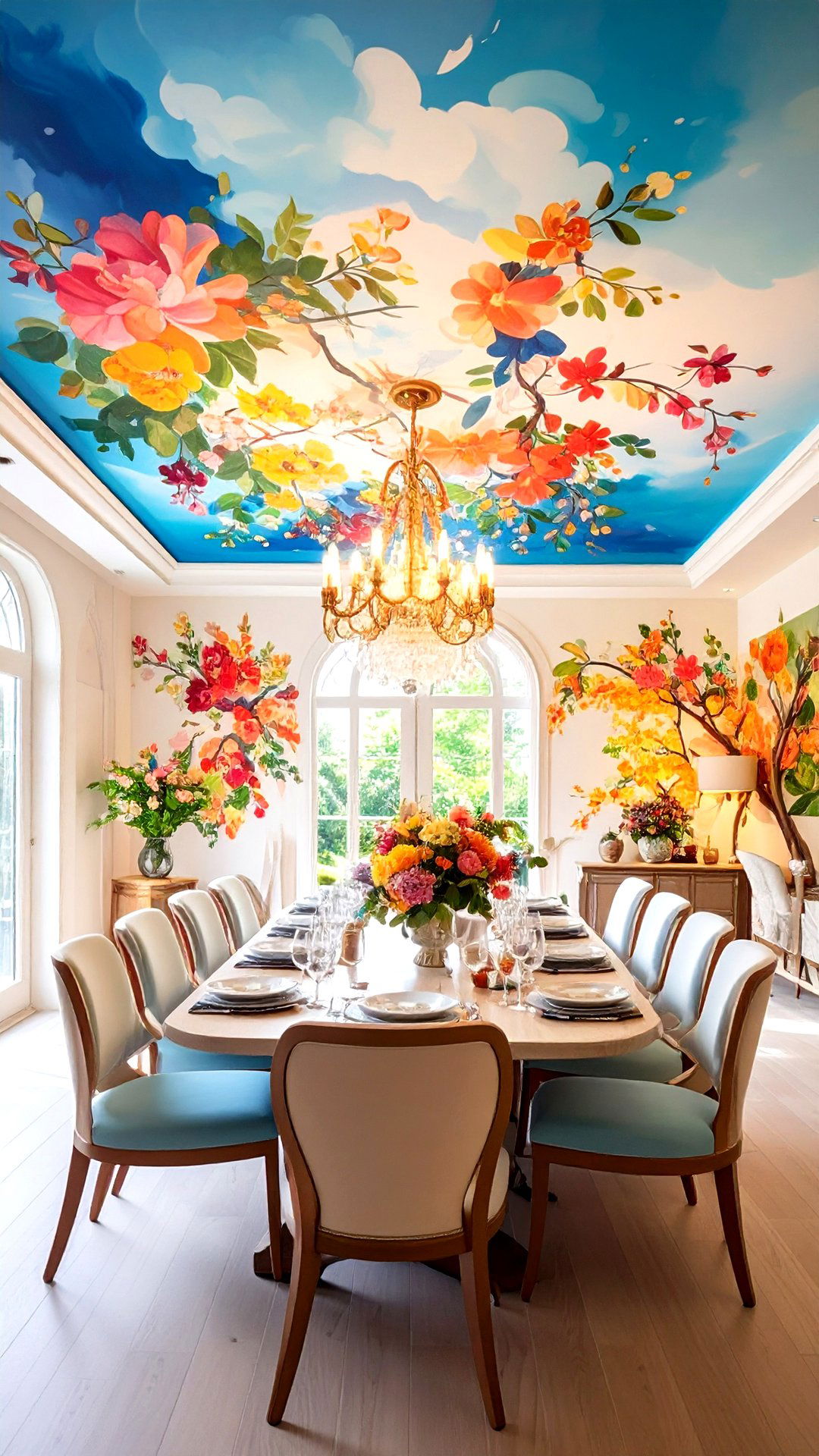
Take your ceiling beyond color with a custom mural — cloudscapes, botanical vines, or abstract swirls — tailored to your interests. Artists sketch outlines in charcoal, apply acrylic or latex, then seal with matte varnish for easy cleaning. Even simple motifs around a medallion draw the eye upward and lend personality impossible to mass-produce. In kids’ rooms, whimsical constellations encourage bedtime stargazing; in dining rooms, soft watercolor washes add sophistication. Because murals are inherently unique, your accent ceiling becomes a personal gallery.
15. Bamboo-Plank Accent Ceiling for Eco Appeal
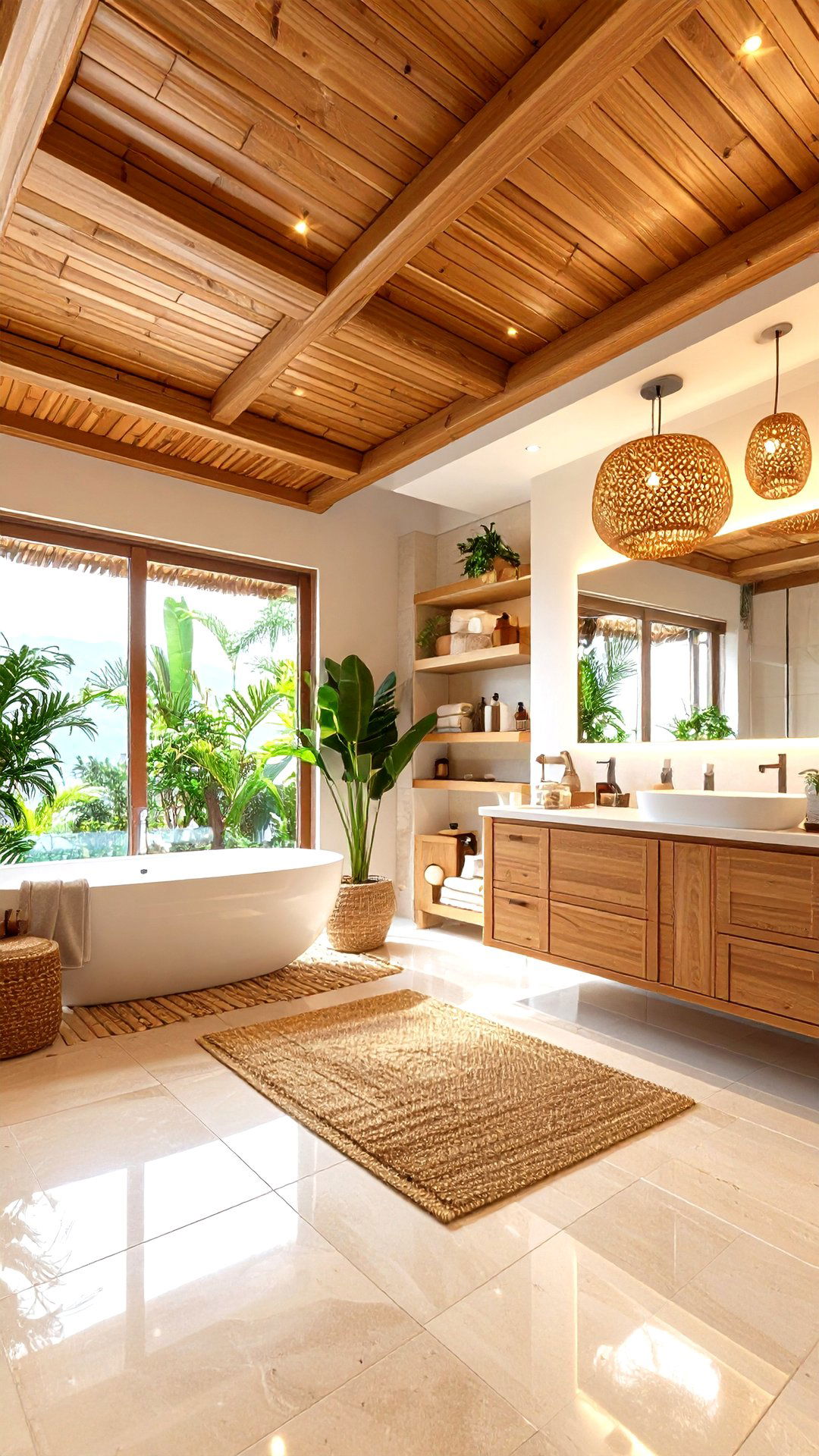
For sustainability minded decorators, rapid-renewal bamboo planks offer a carbon-smart alternative to hardwood. Kiln-dried and tongue-and-grooved, they install similarly to traditional paneling but weigh less. Natural caramel or strand-woven textures pair beautifully with houseplants and rattan accents, channeling relaxed spa energy. Seal planks with low-VOC polyurethane to protect against humidity. The resulting accent ceiling is not only striking but also planet-friendly, aligning aesthetics with environmental values.
16. Two-Tone Painted Accent Ceiling Adds Subtle Geometry
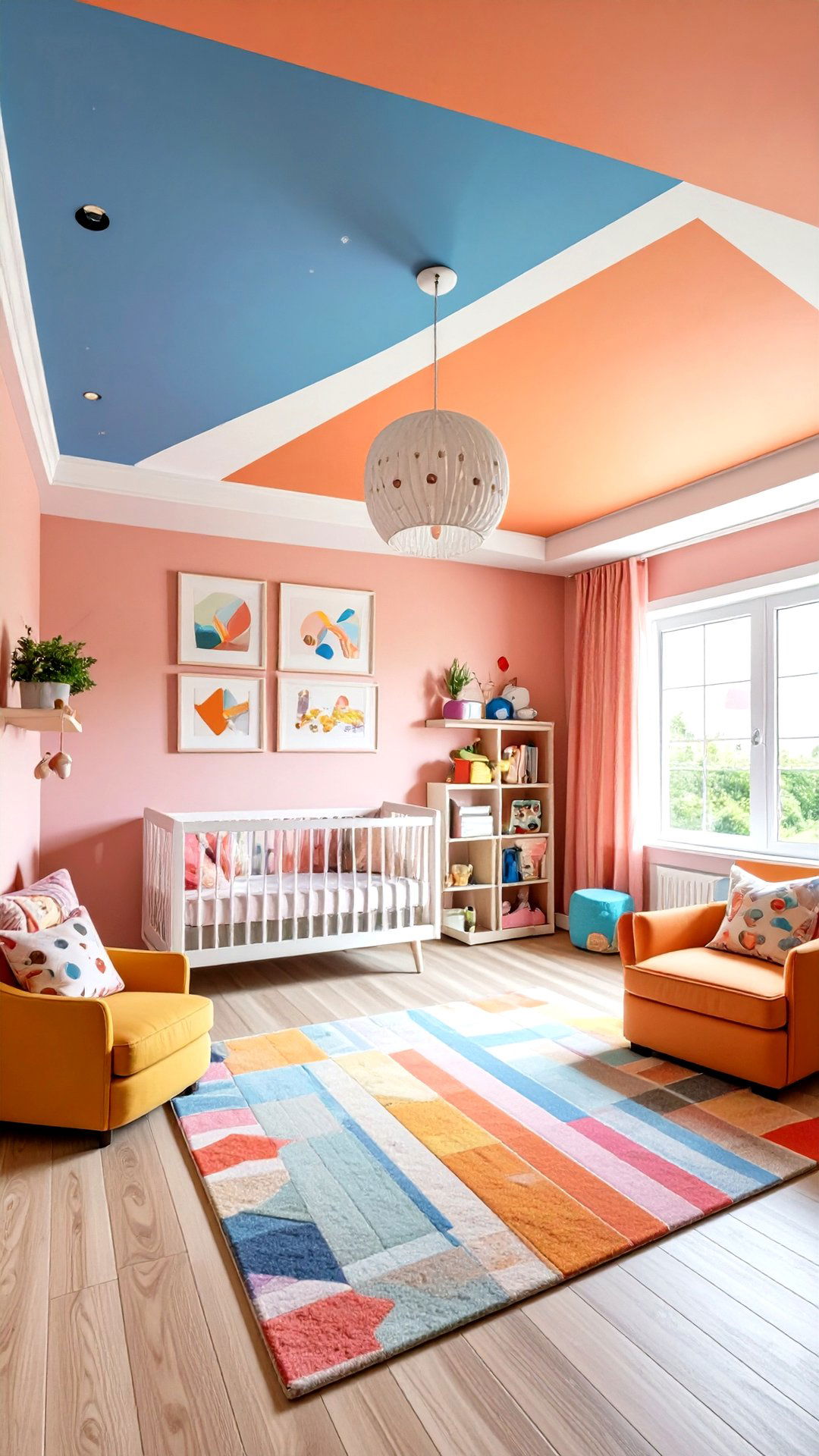
Also, dividing the ceiling with a crisp diagonal or curved line and filling each portion with complementary colors injects playfulness without materials cost. Think blush meeting terracotta in a nursery or navy fading into dove gray above a modern office. Use painter’s tape or laser levels for razor-sharp separation, and finish edges with a thin metallic stripe for polish. This accent ceiling approach lets renters easily repaint while delivering maximum graphic impact.
17. Skylight-Illusion Accent Ceiling Brings the Outdoors In

For windowless rooms, install an array of edge-lit LED panels printed with high-resolution sky images. The panels mount flush like drop-ceiling tiles yet simulate natural daylight, boosting mood and circadian rhythm. Smart versions change scene — from sunny afternoon to starry night — via phone app. Frame the panels with simple trim painted wall color so the “sky” appears boundless. Though high-tech, the effect feels organic, turning an accent ceiling into a daily dose of open air.
18. Tin-Look PVC Grid Accent Ceiling on a Budget
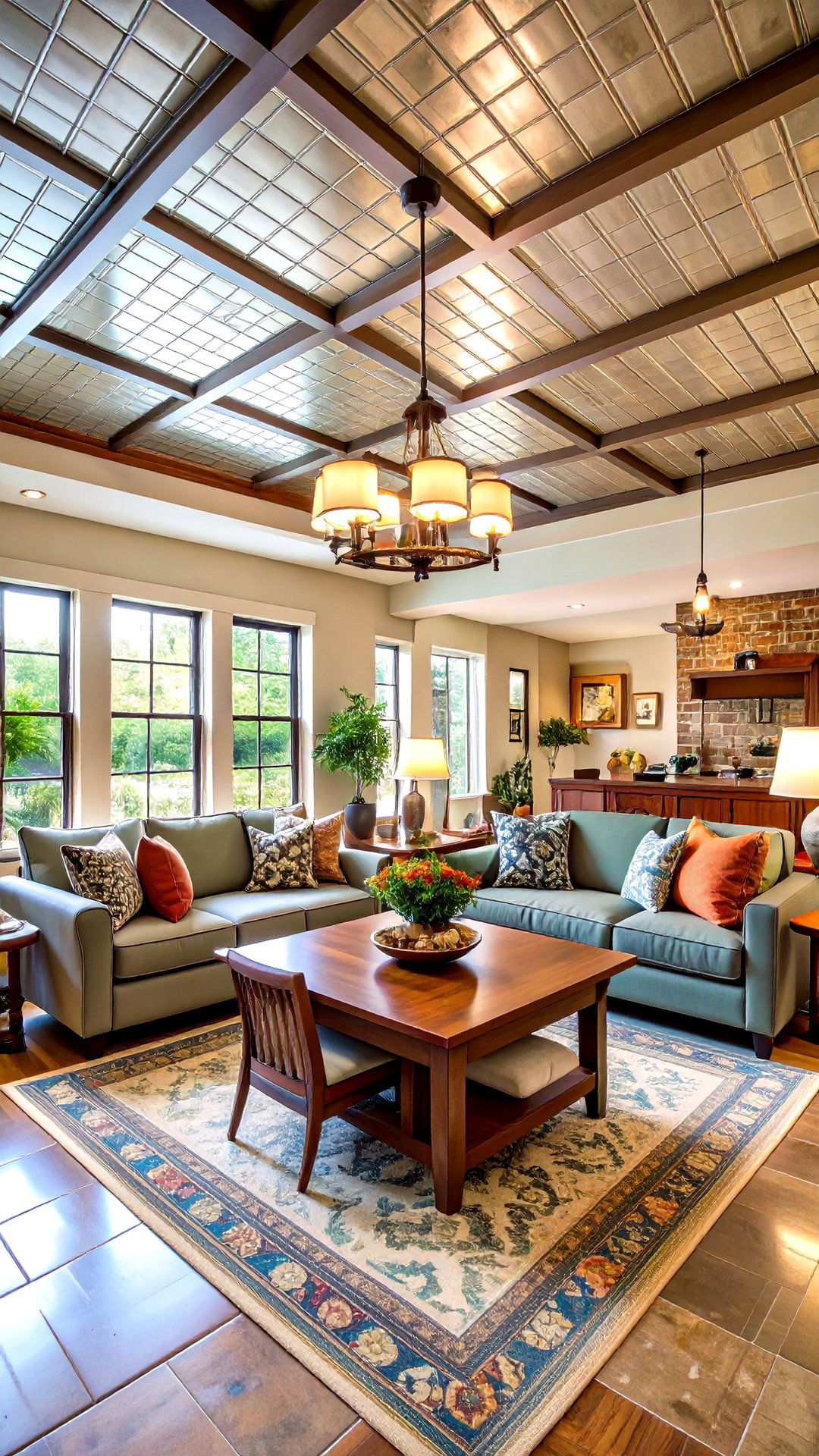
Certainly, homeowners craving vintage texture without metal’s weight can snap lightweight PVC faux-tin tiles into a standard 24-inch T-bar grid. Panels come prefinished in white, bronze, or antique pewter and can be trimmed with scissors. Because PVC resists moisture, it’s ideal for bathrooms or basements. Pair the faux-tin accent ceiling with glossy subway tile walls for an old-world vibe that’s maintenance-friendly and wallet-kind.
19. Geometric 3-D Panel Accent Ceiling for Bold Texture
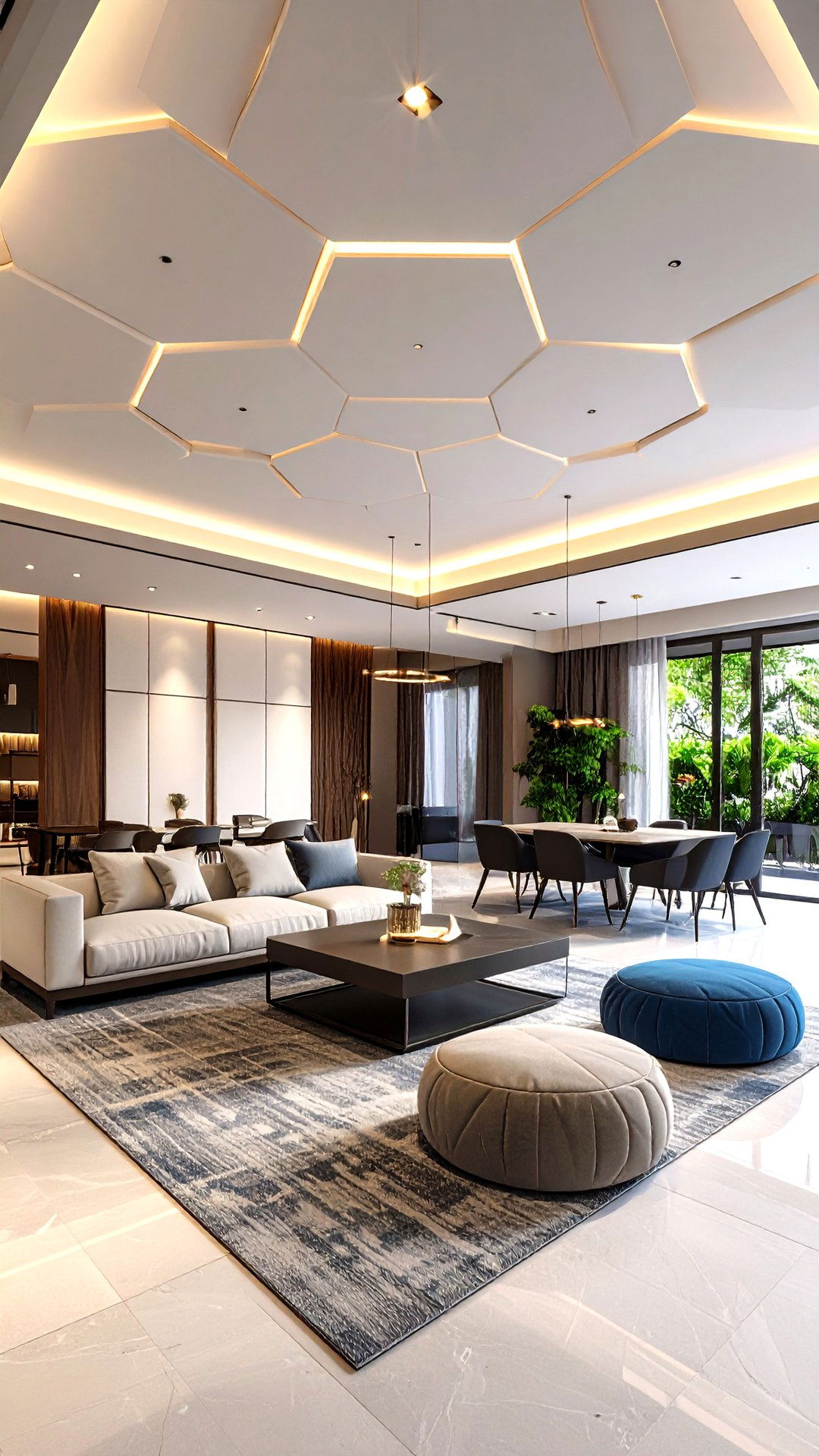
Studies show dimensional surfaces increase perceived luxury in interior design. Install lightweight gypsum or MDF panels molded into triangles, hexagons, or ripples, then paint them a single hue so shadows create the pattern. LED spotlights grazing across peaks and valleys emphasize depth. Though dramatic, monochromatic color prevents chaos, while the repeating motif ties rooms together if echoed in cushions or rugs. This accent ceiling feels modern yet timeless, proving texture can rival color for impact.
20. Beam-and-Wallpaper Combo Accent Ceiling Mixes Materials
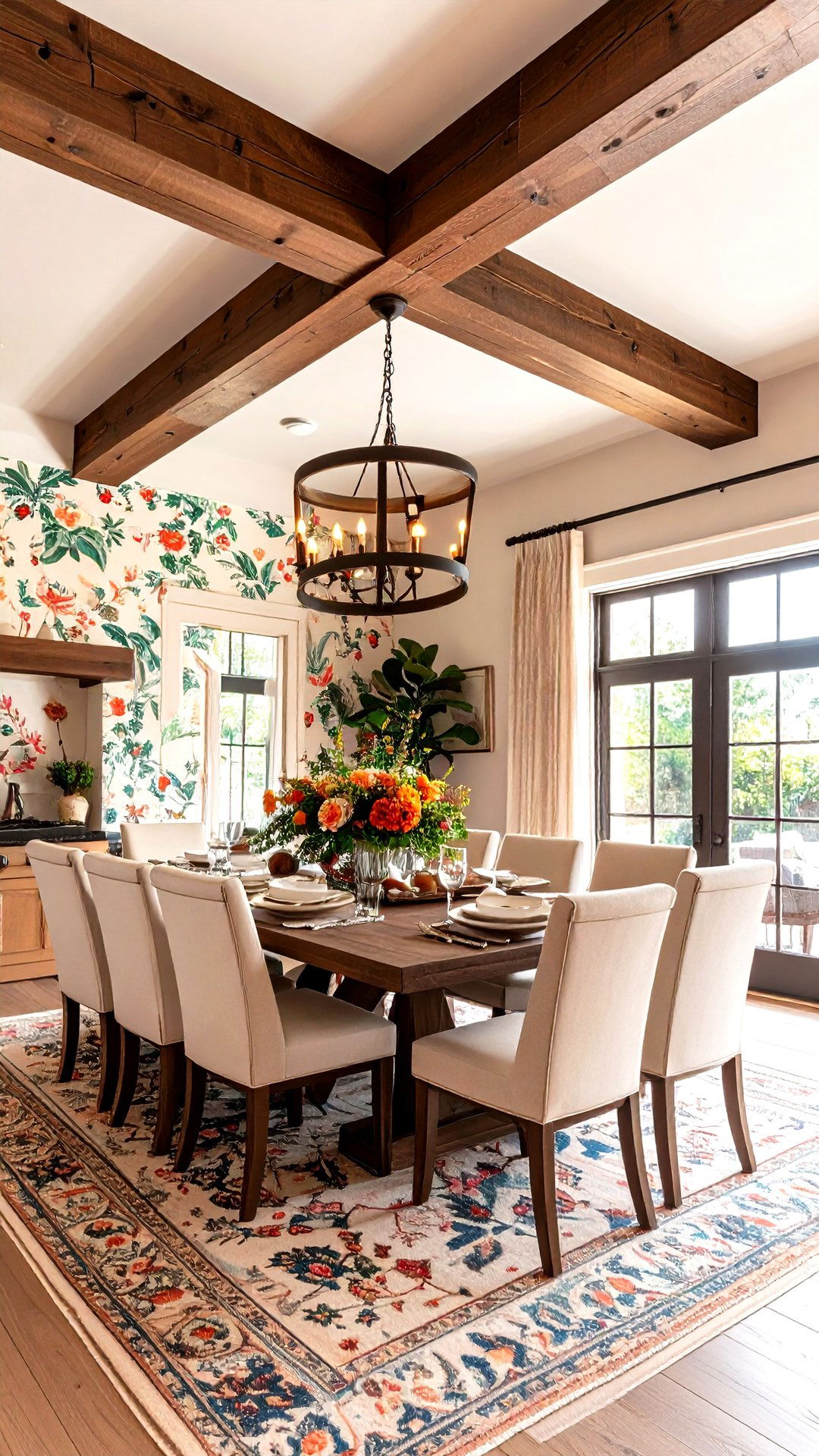
Another fresh twist pairs faux-wood beams forming an X or grid over patterned wallpaper. The beam depth frames each print section like artwork, balancing softness with structure. Choose botanical or chinoiserie motifs for elegance, then stain beams espresso for contrast. Because wallpaper hides between beams, seams stay invisible, easing installation. This accent ceiling approach blends two popular trends — beams and bold prints — into a single, unforgettable statement.
21. Microcement Accent Ceiling for Seamless Minimalism
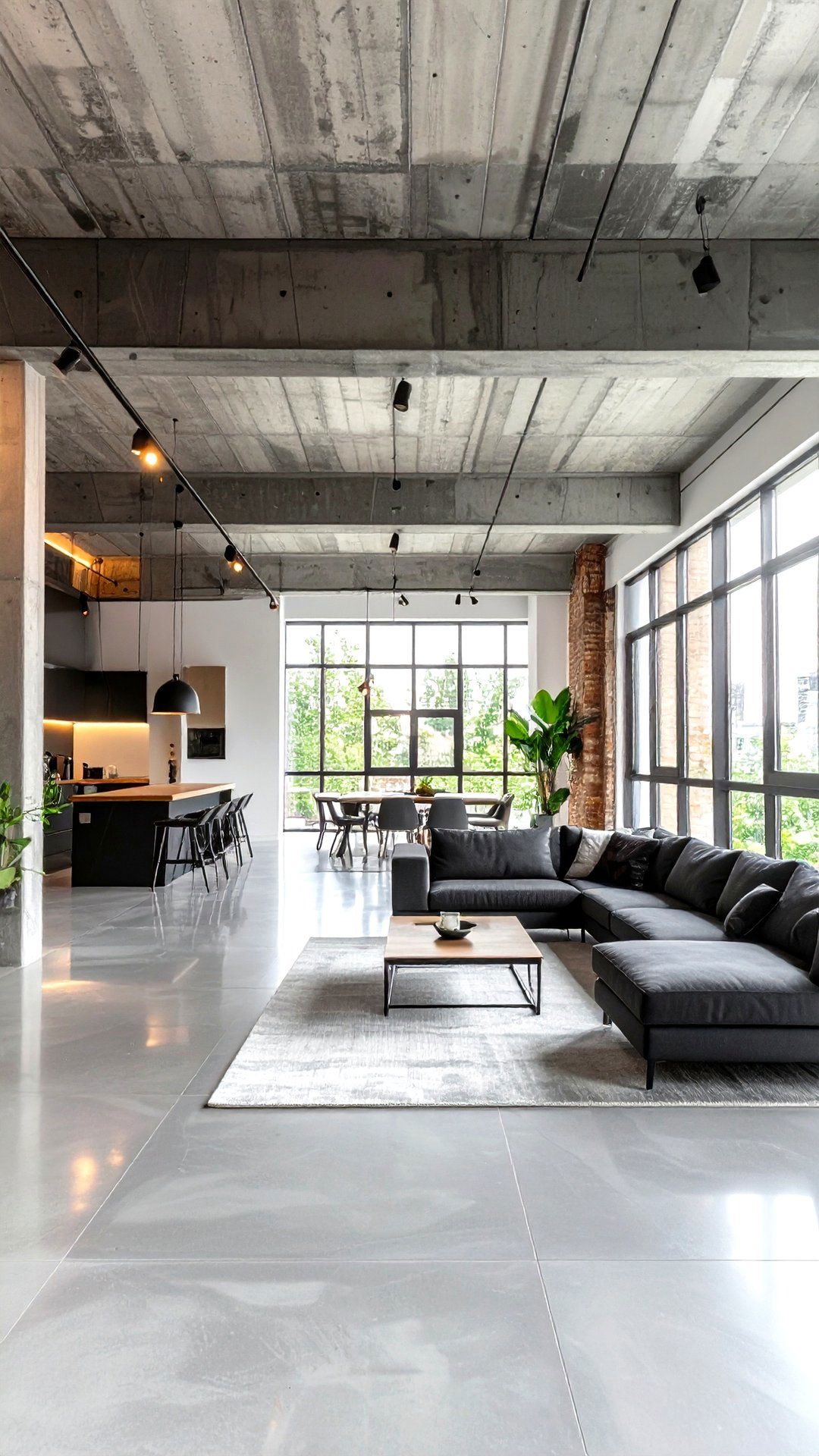
To achieve loft-style sleekness, trowel microcement — a fine polymer-modified cement — directly onto primed drywall. Once sealed, the surface resembles polished concrete yet weighs far less and adds barely millimeters of thickness. Its continuous finish eliminates cracks and joints, making small spaces feel larger. Pair a microcement accent ceiling with under-stated furnishings and matte-black fixtures for gallery vibes. Regular dusting and occasional mineral-oil buffing keep the surface velvety.
22. Painted-Trim Accent Ceiling Highlights Architecture
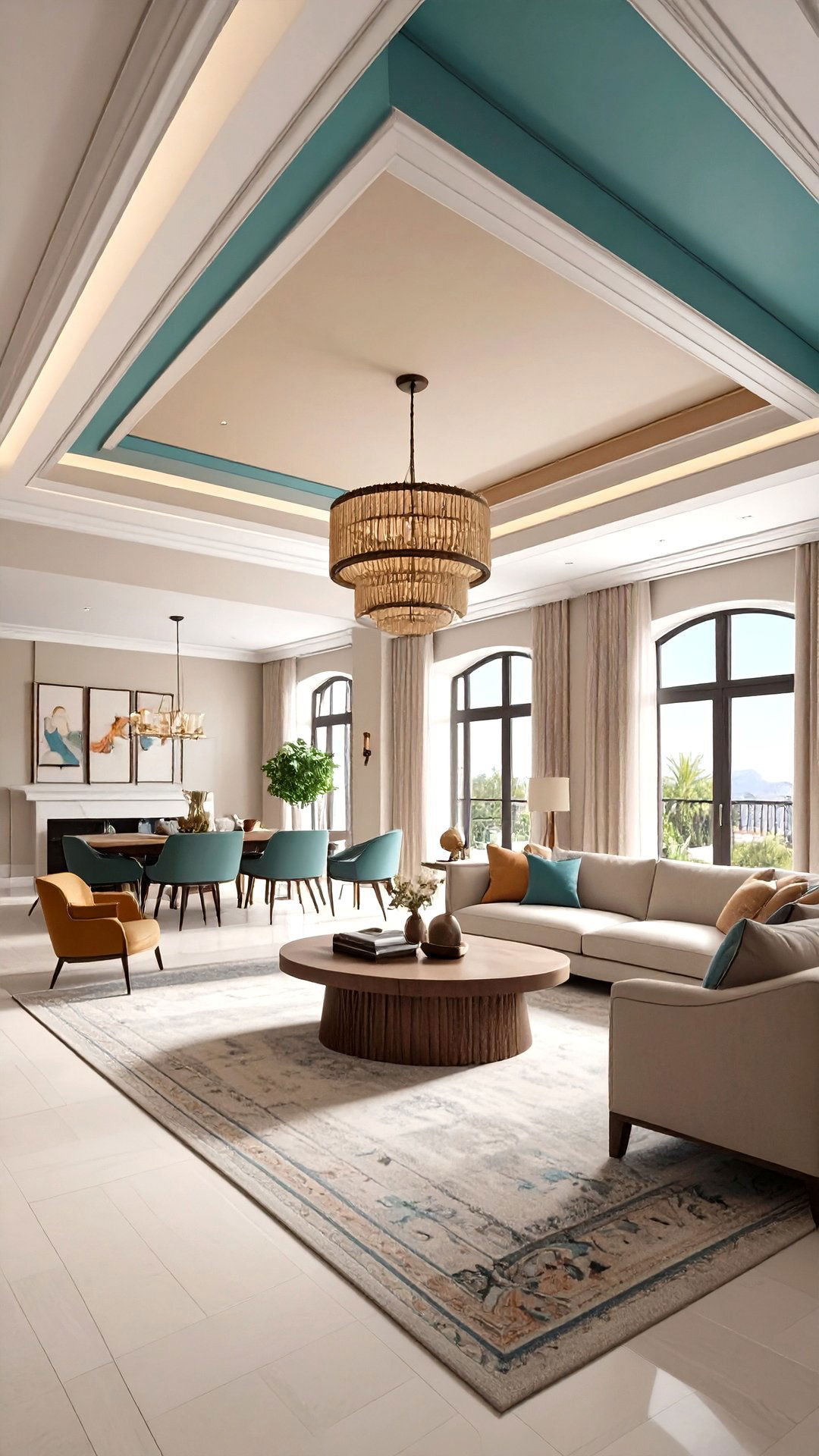
Despite the accent wall’s long reign, designers increasingly keep walls neutral and move color to trim and crown on the ceiling, framing a lighter center. By outlining coffer boxes, medallions, or simple perimeters with bold hues — think saffron or teal — you emphasize architectural detail without full coverage. Paint the ceiling recess a pale tone to maintain openness. This fresh pivot has overtaken traditional accent walls in popularity, according to color experts.
23. Peel-and-Stick Wood Herringbone Accent Ceiling DIY Upgrade
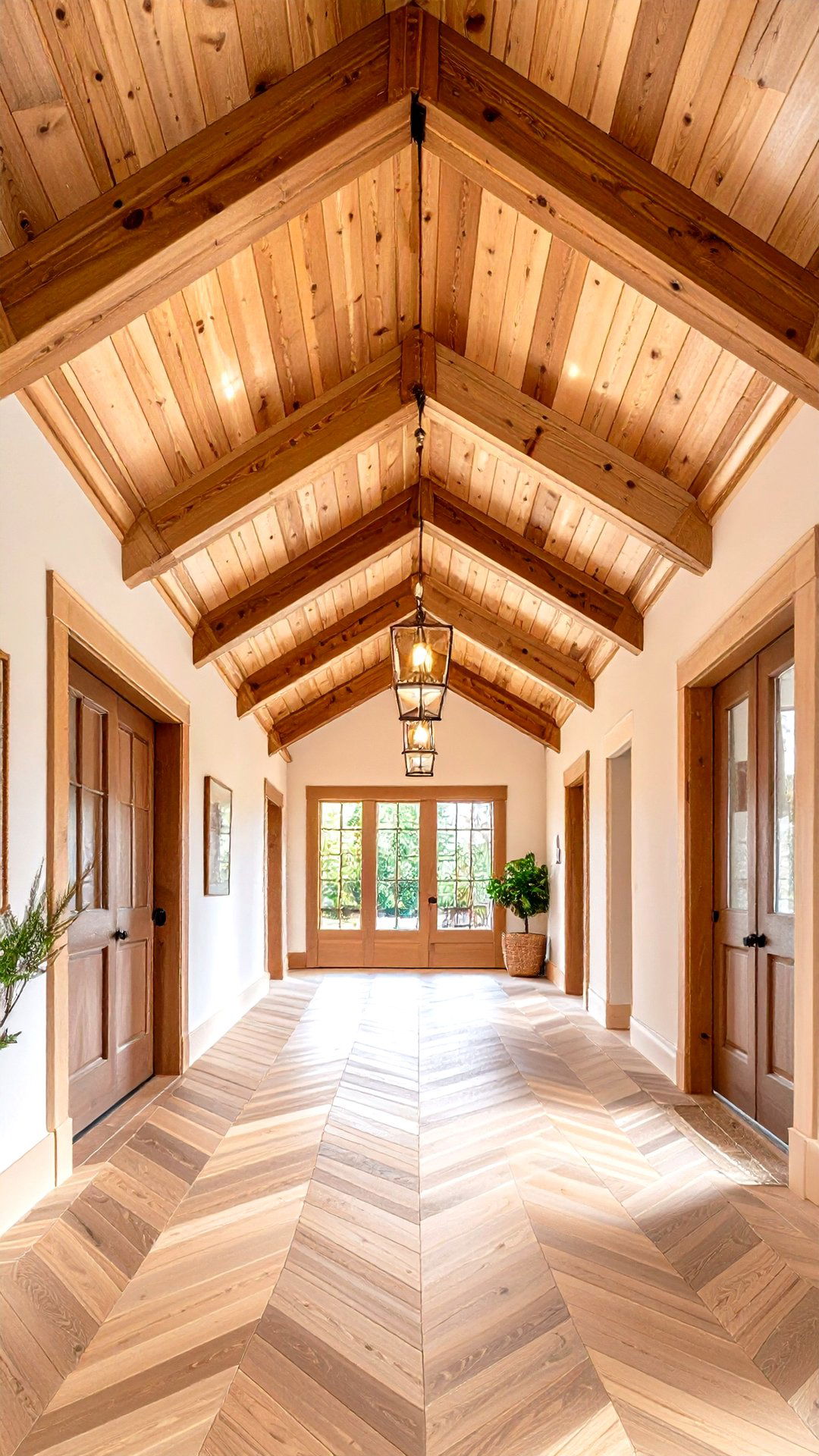
For renters or weekend warriors, thin peel-and-stick planks arranged in a herringbone pattern deliver rich wood texture without nails or heavy tools. Clean, measure, snap chalk lines, then apply planks row by row, staggering cuts for authenticity. A matte polyurethane topcoat boosts adhesion and wipe-ability. The herringbone accent ceiling works particularly well in narrow hallways, where its angled joints guide movement and add visual width.
24. Color-Drenched Accent Ceiling and Walls Unite Space
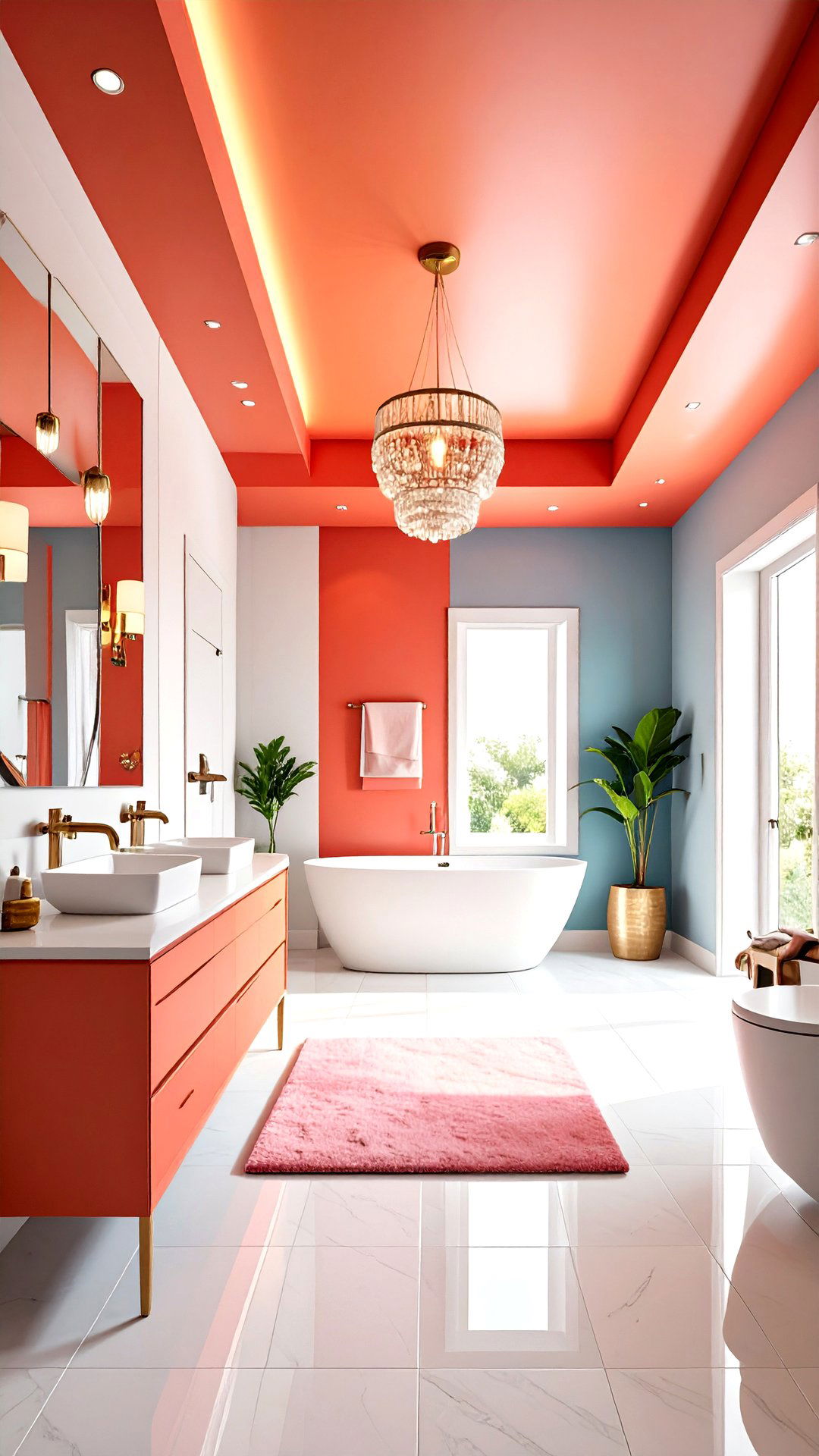
Owing to a shift toward immersive color, painting walls, trim, doors, and the accent ceiling the exact same shade wraps a room in a unified cocoon. Designers recommend this technique in small studies or powder rooms where depth-of-field illusions shine. Matte finishes hide flaws, while monochrome backgrounds let artwork and furniture become focal accents. Add contrasting metals — brass knobs, black sconces — to avoid flatness. The enveloping effect feels sophisticated yet calming.
25. Smart-Panel Accent Ceiling Responds to Ambience
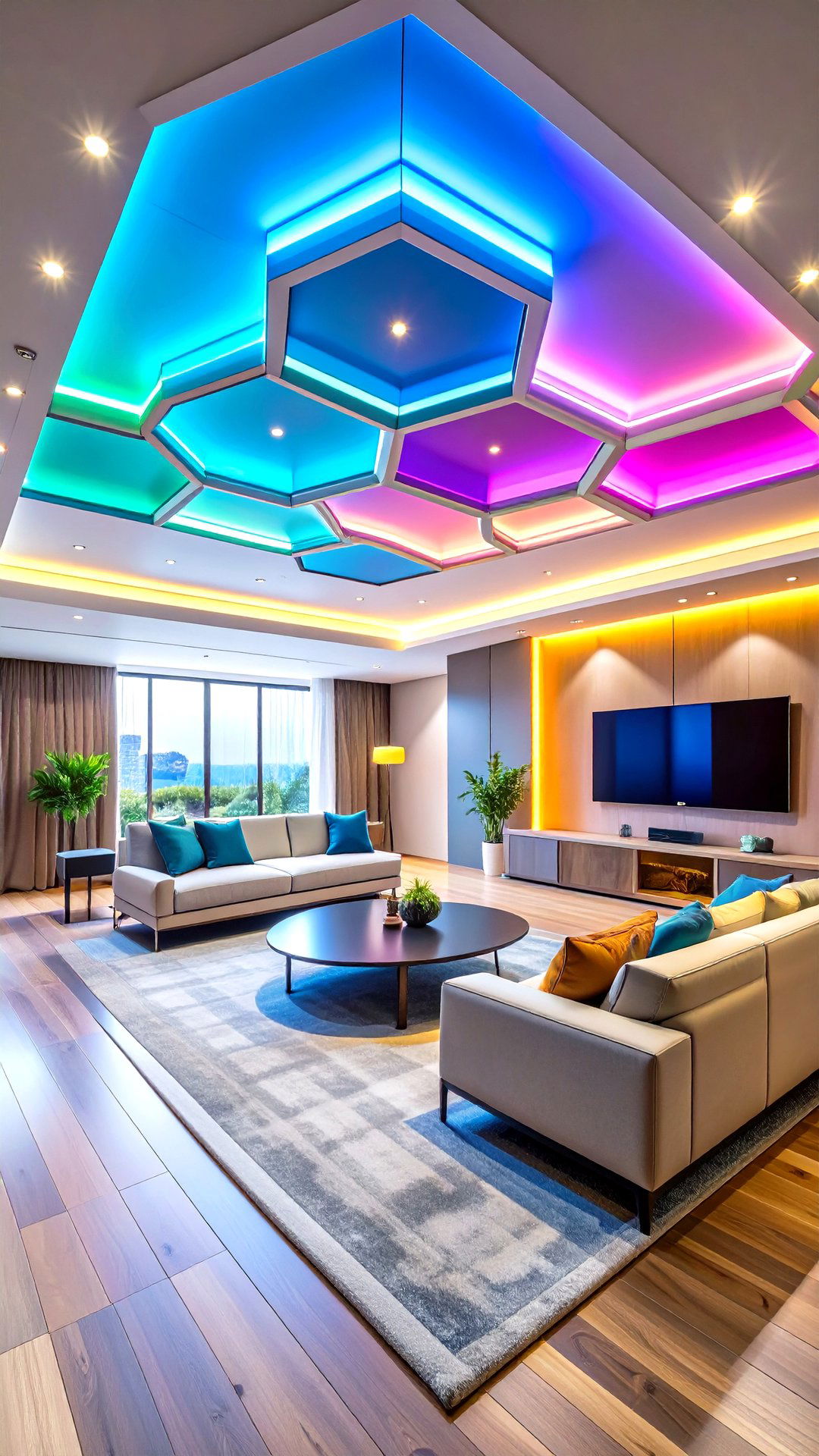
To wrap things up, integrate modular LED panels — like hexagonal Nanoleaf tiles — onto the ceiling, allowing customizable color scenes that sync with music or circadian schedules. Panels affix with removable mounts and pair via Wi-Fi for voice control. Use warm ambers at night, energizing daylight whites in the morning, or holiday palettes when entertaining. Beyond tech wow-factor, the color-changing accent ceiling adapts to moods, supporting wellness and fun alike without permanent paint.
Conclusion:
Elevating the “fifth wall” is no longer an afterthought; it’s a design imperative that influences light, acoustics, and the very character of a room. Whether you gravitate toward high-gloss lacquer, tactile shiplap, or tech-driven smart panels, each accent ceiling idea above proves there’s a tailor-made solution for every style and budget. By looking upward with intention, you add a fresh dimension that harmonizes with furnishings, reflects your personality, and future-proofs your home’s appeal. Let these 25 strategies inspire the next time you stand in a room and wonder what more it could be — just glance overhead, and let transformation begin.


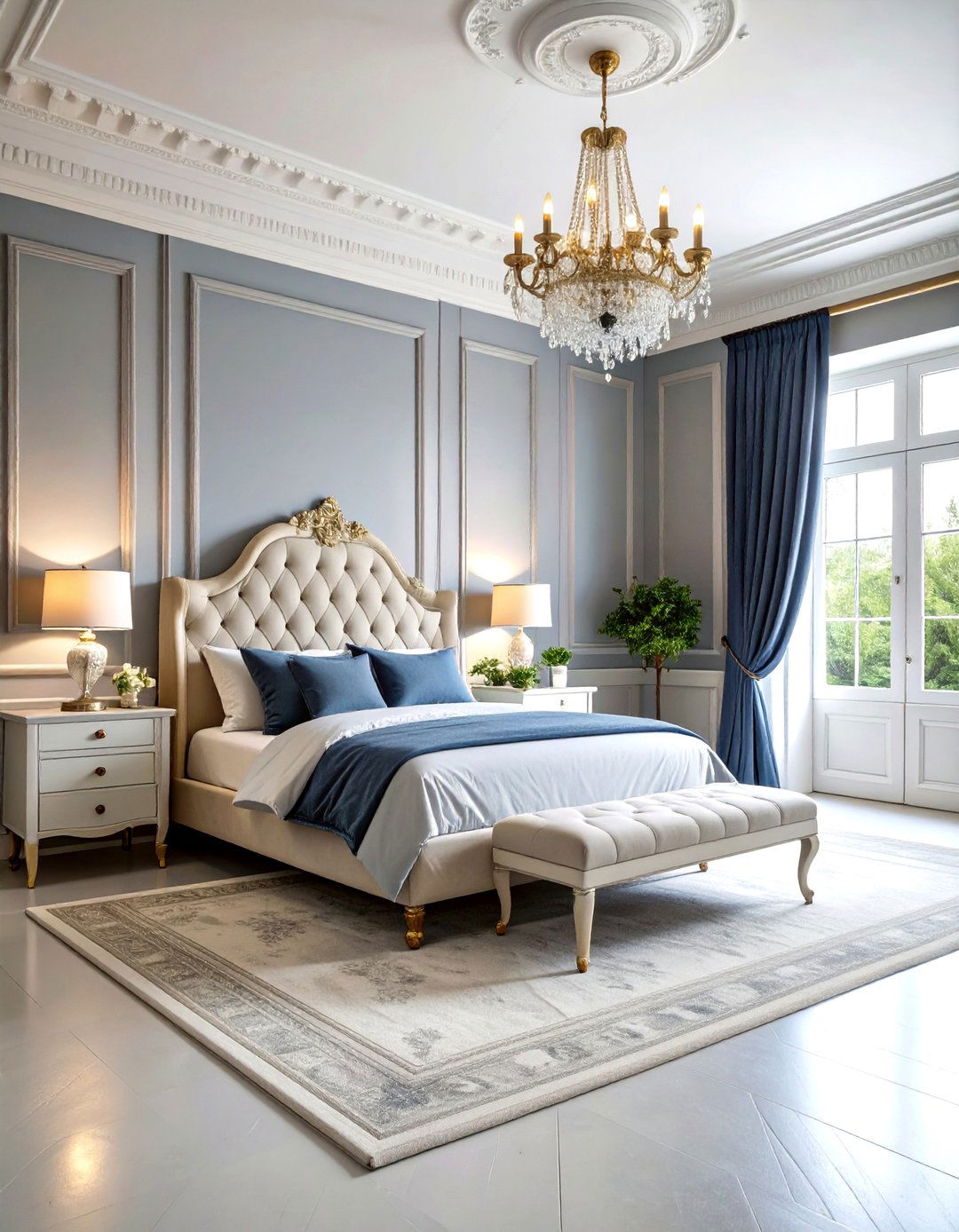
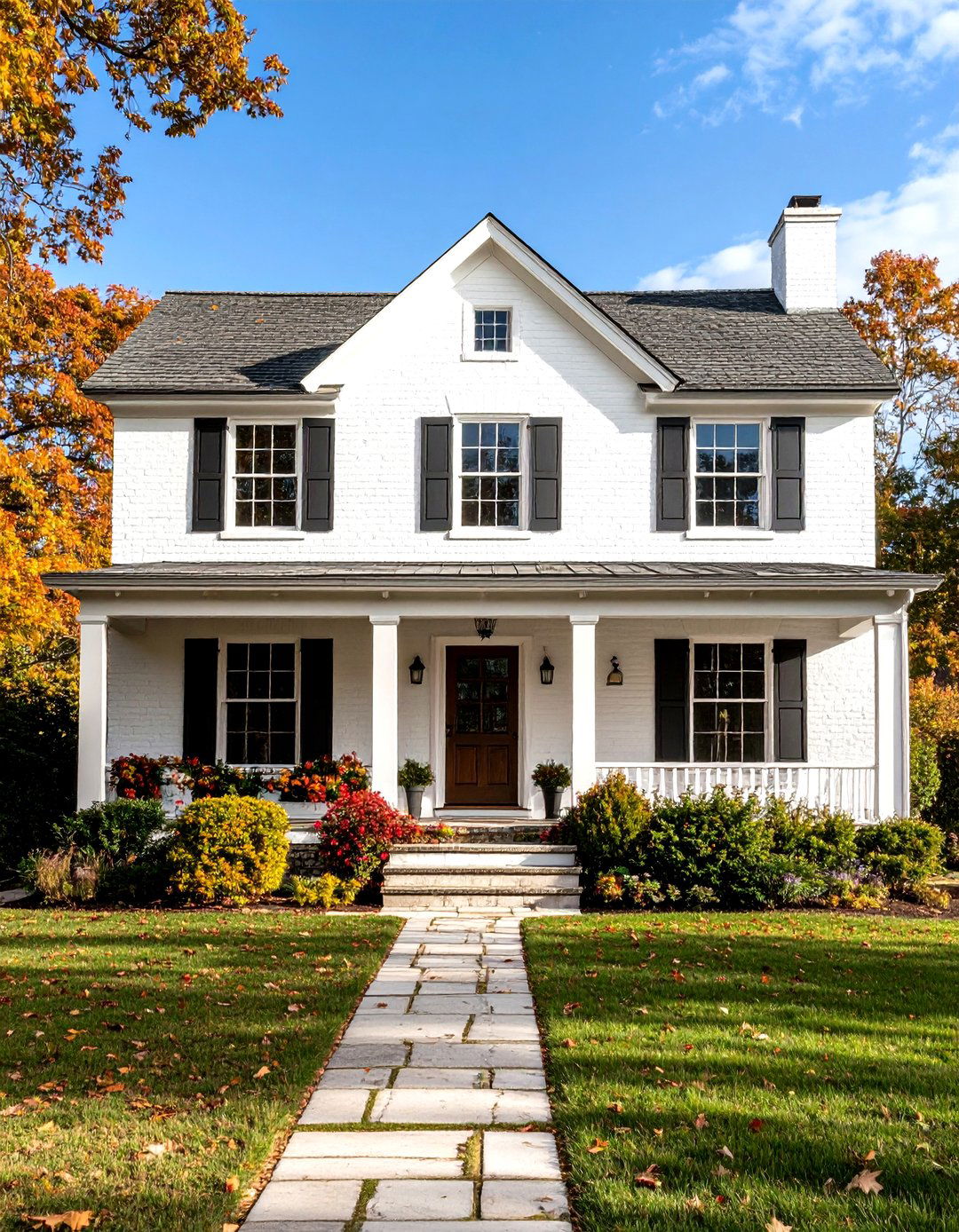
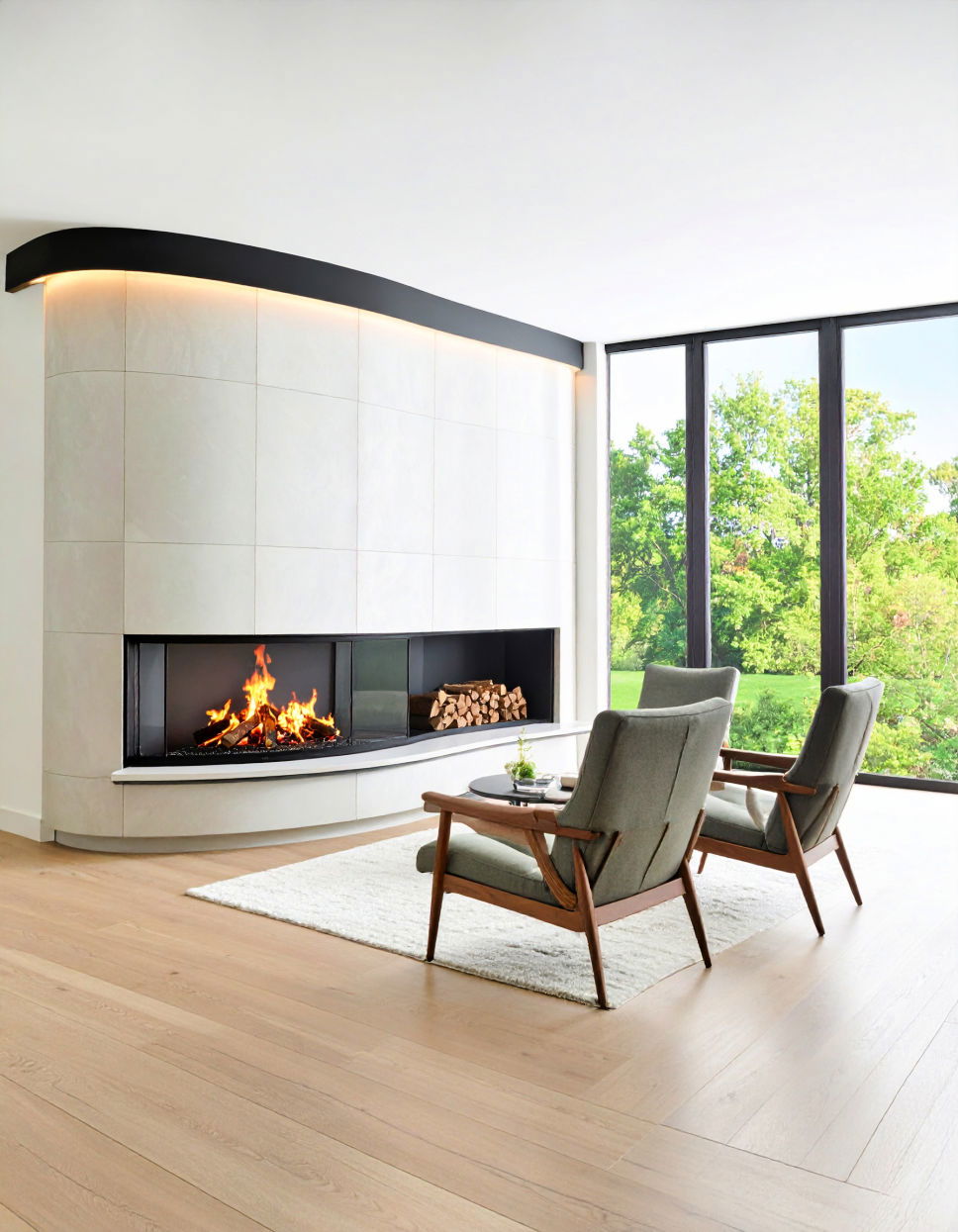

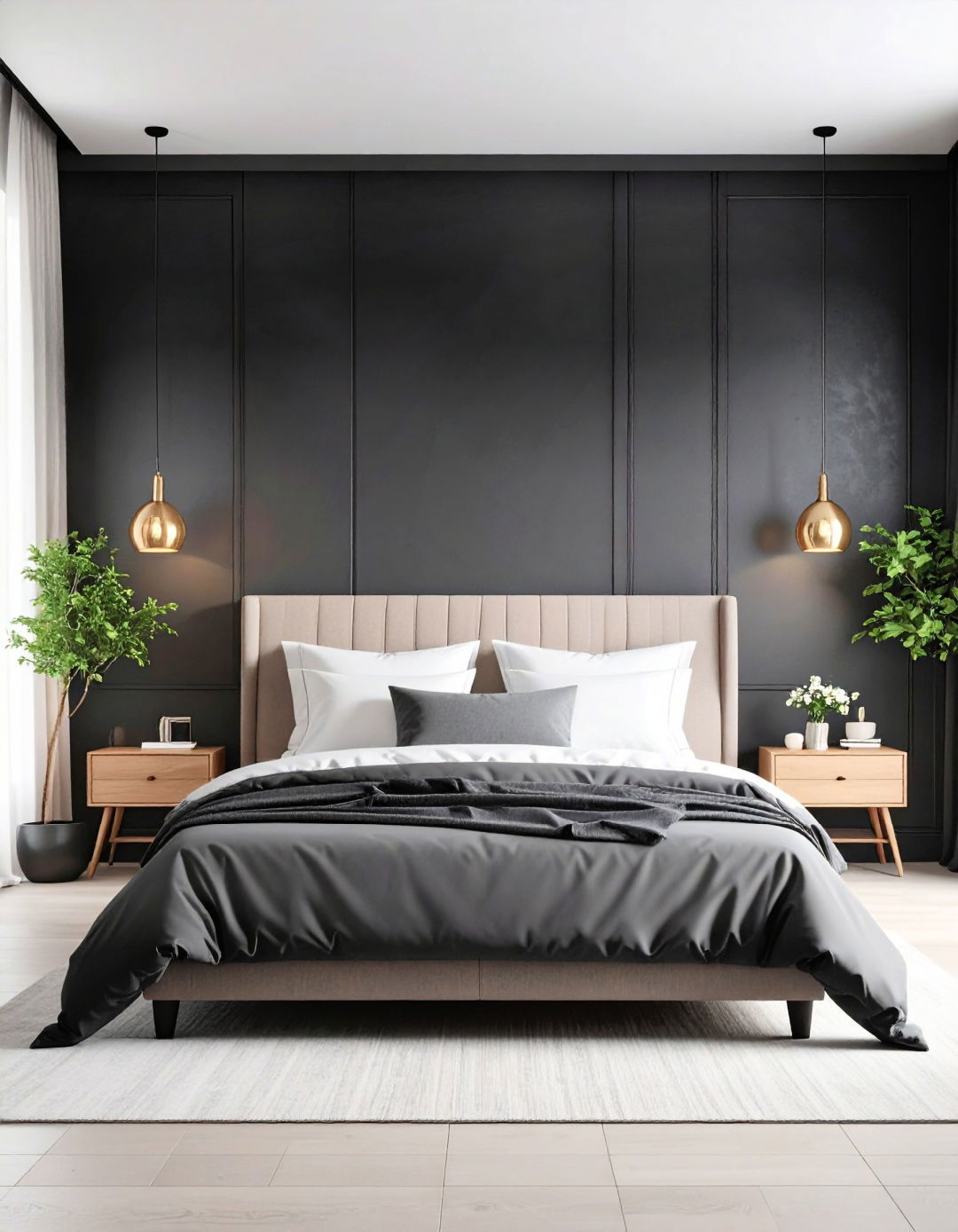
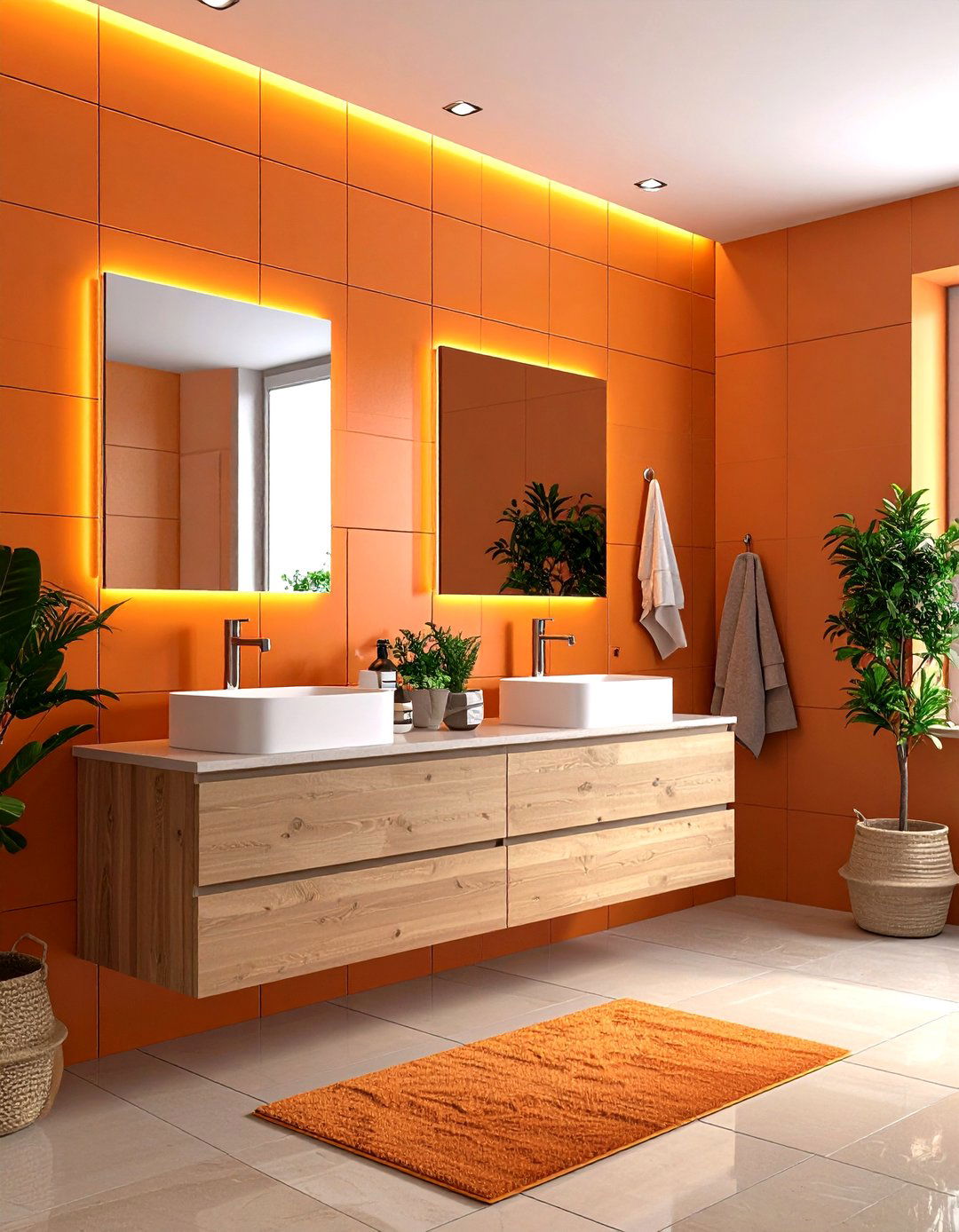
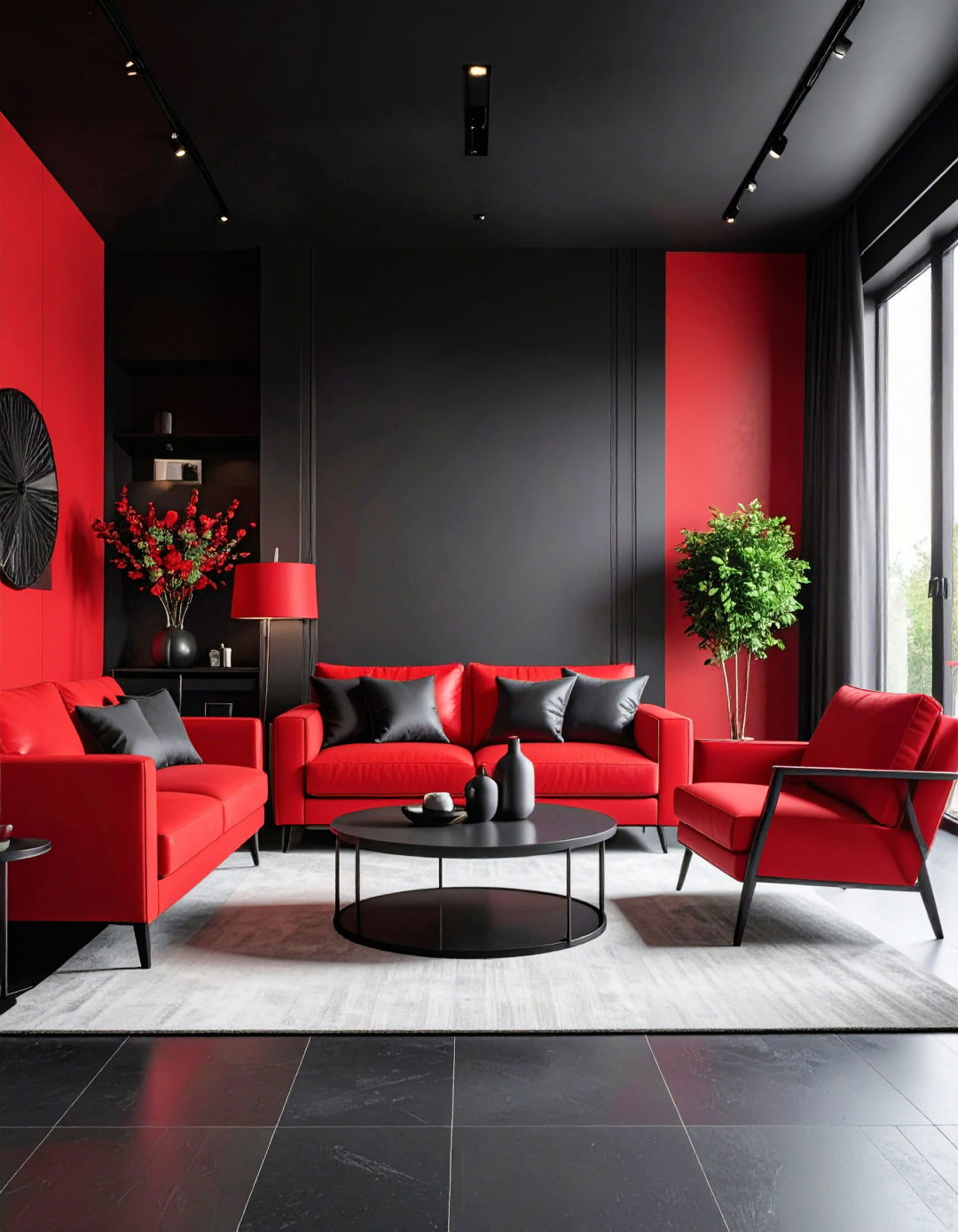
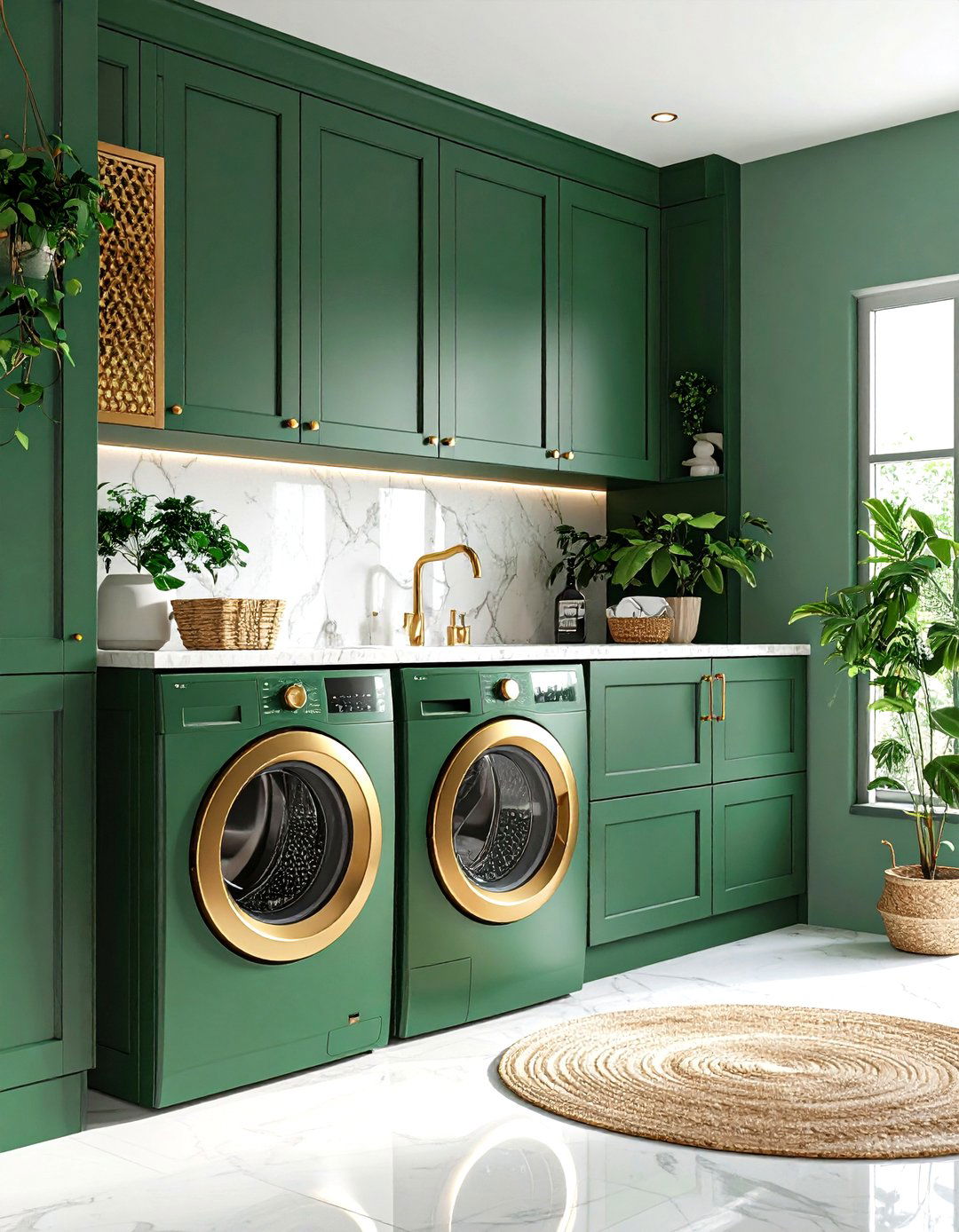
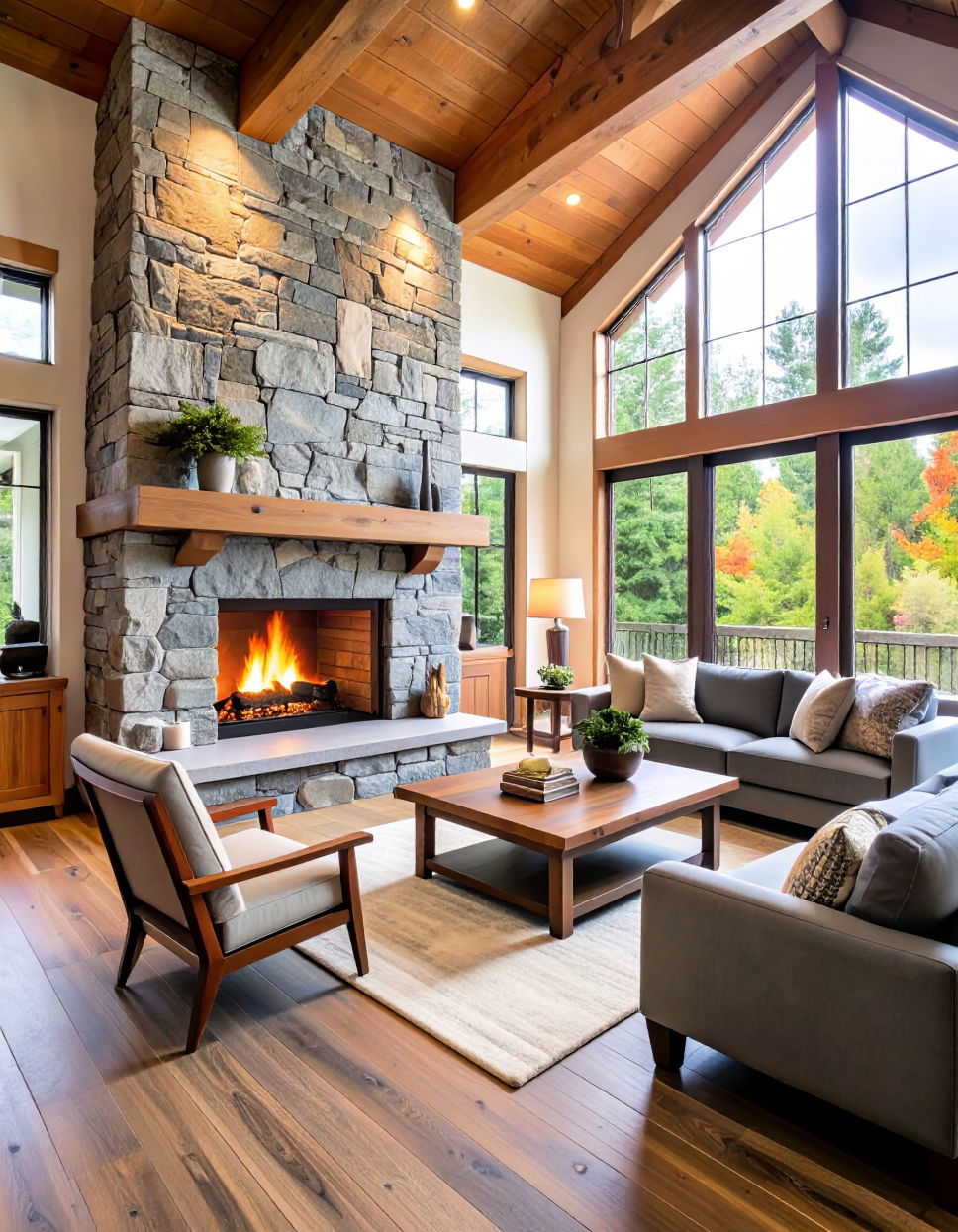
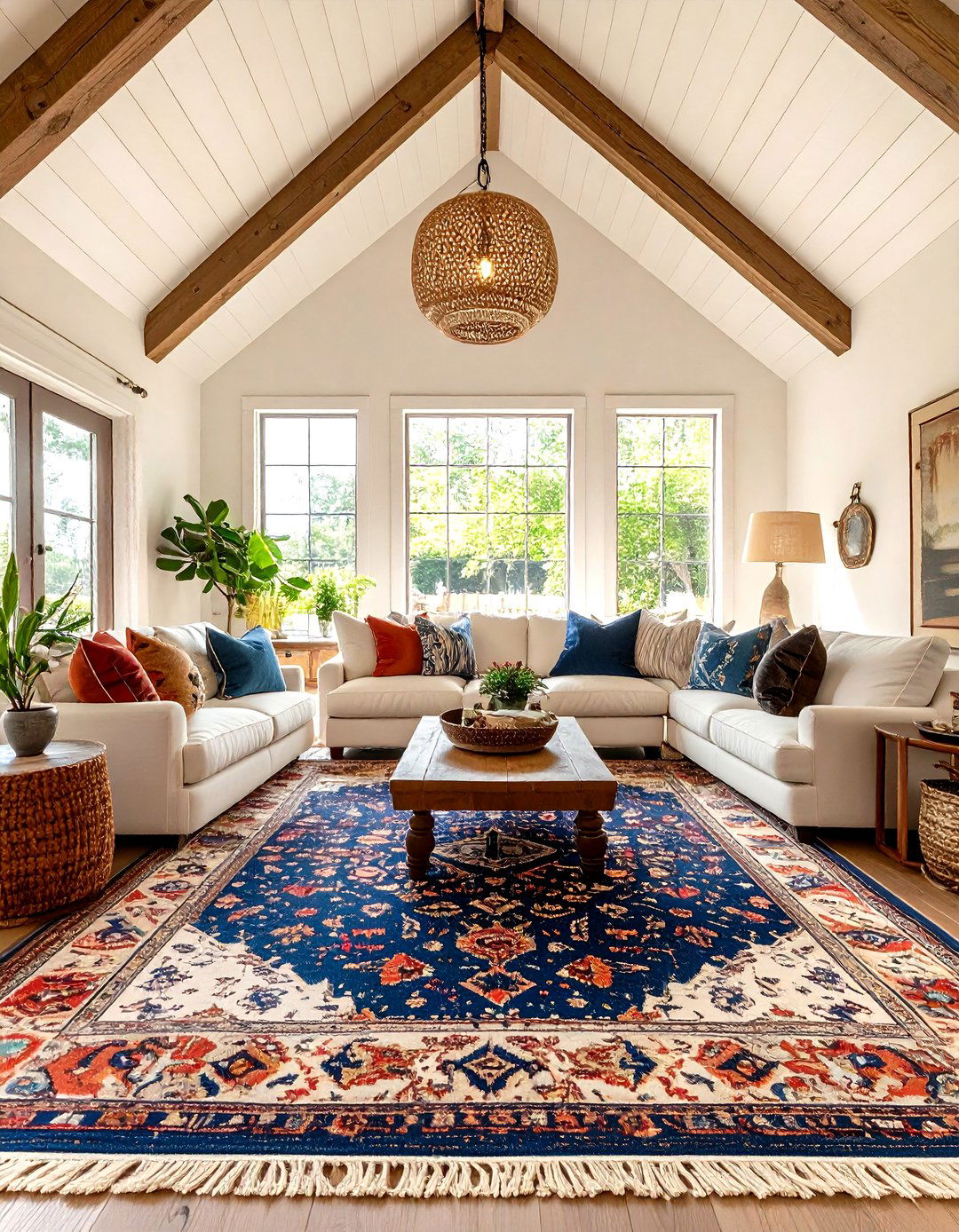

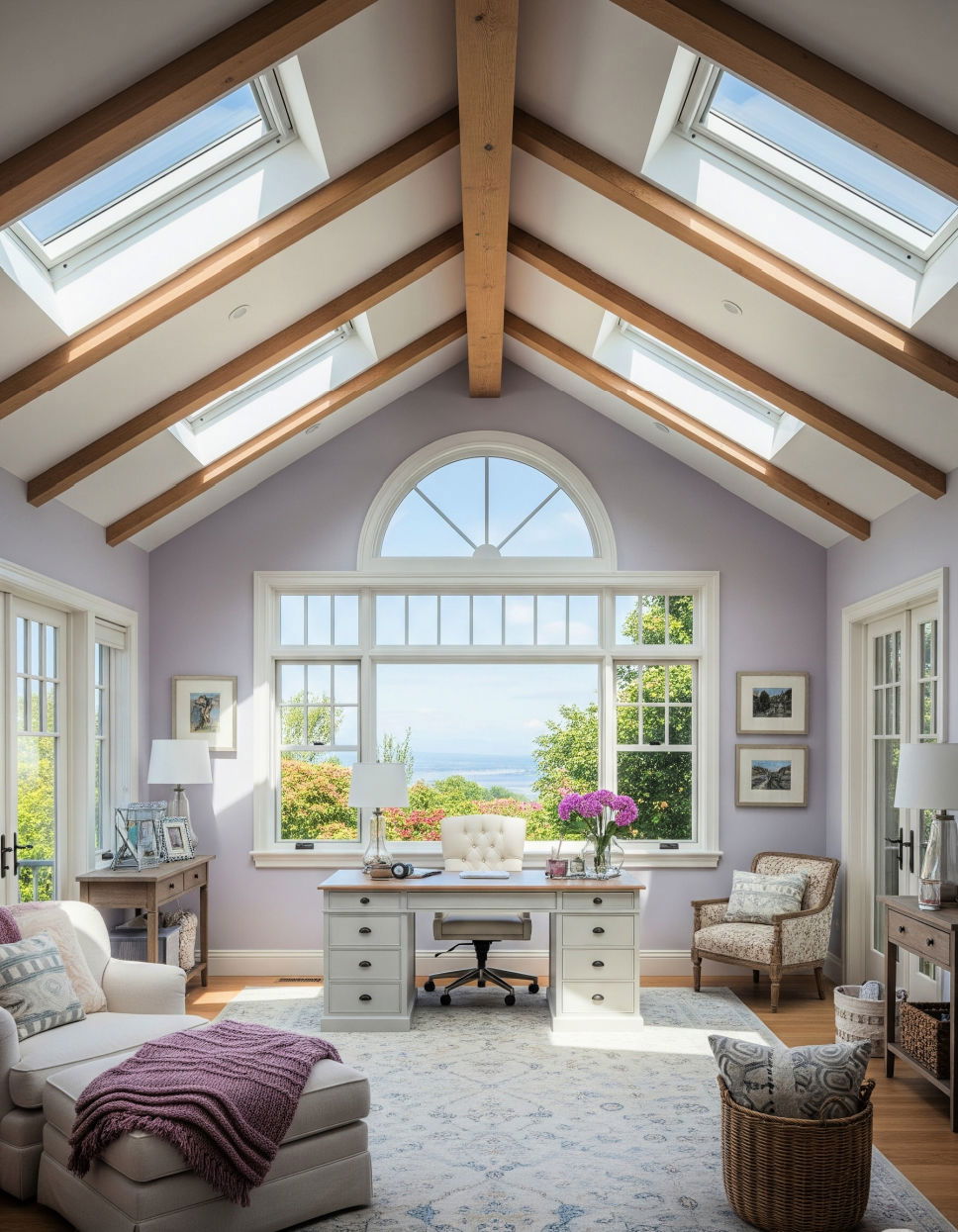
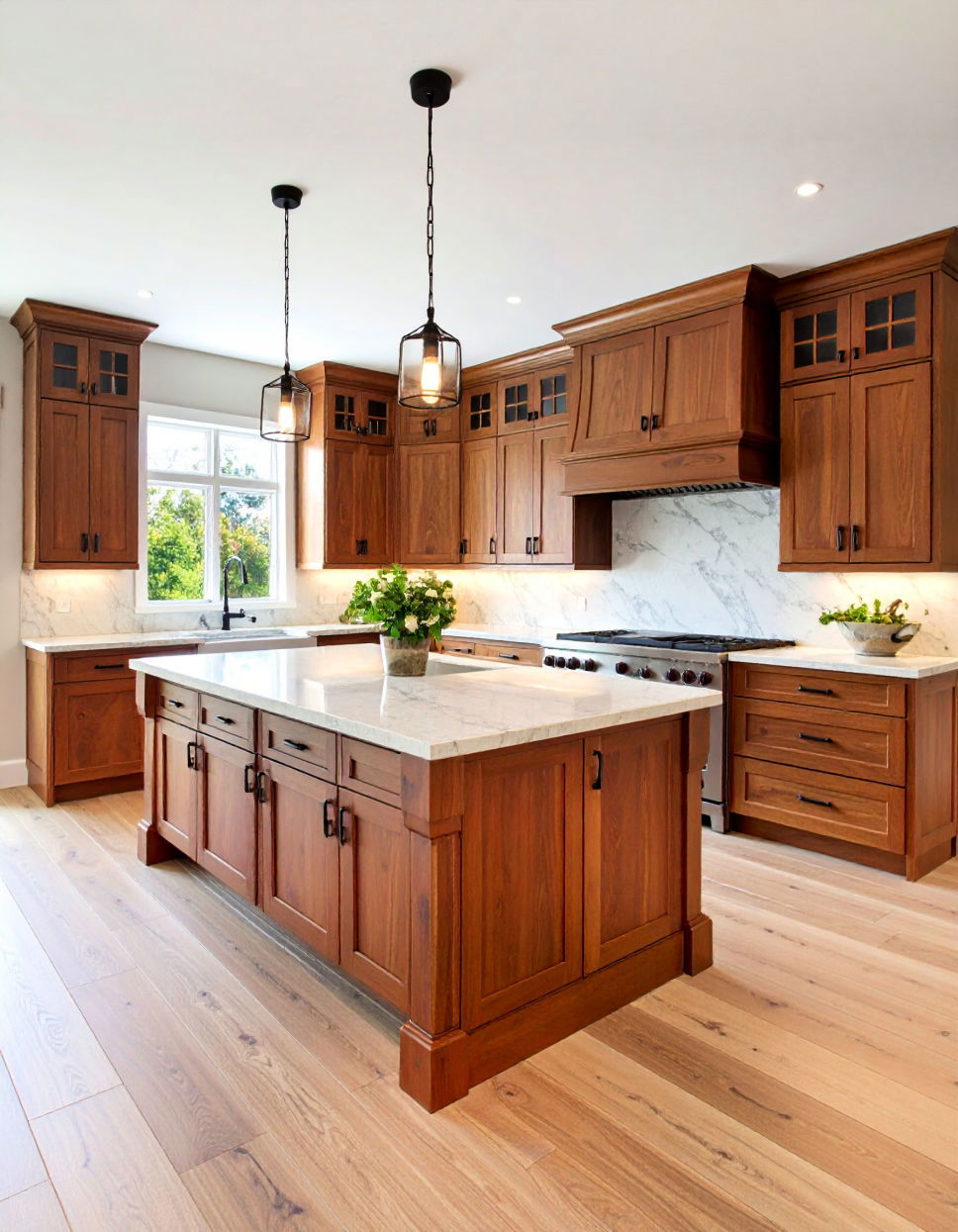

Leave a Reply